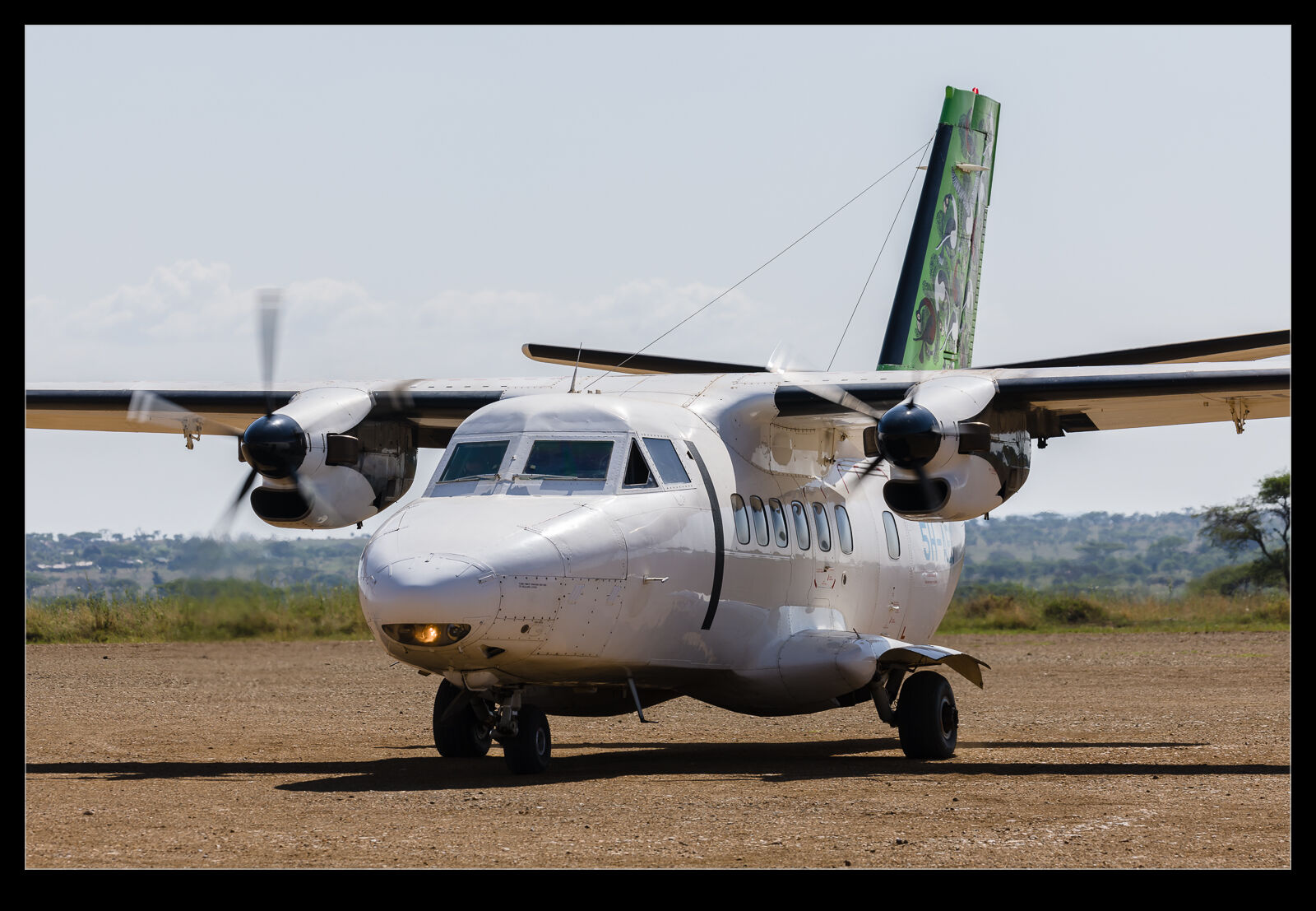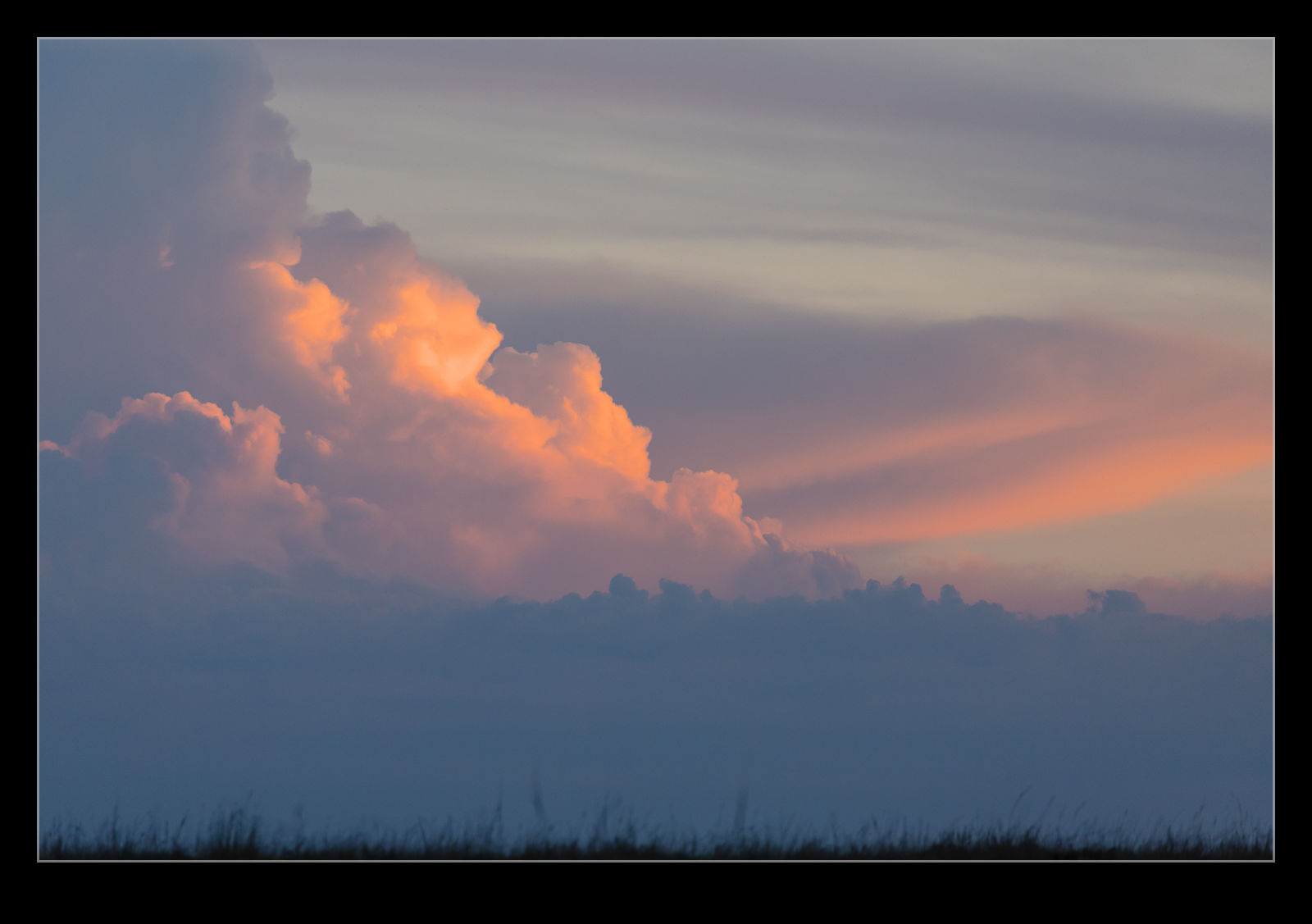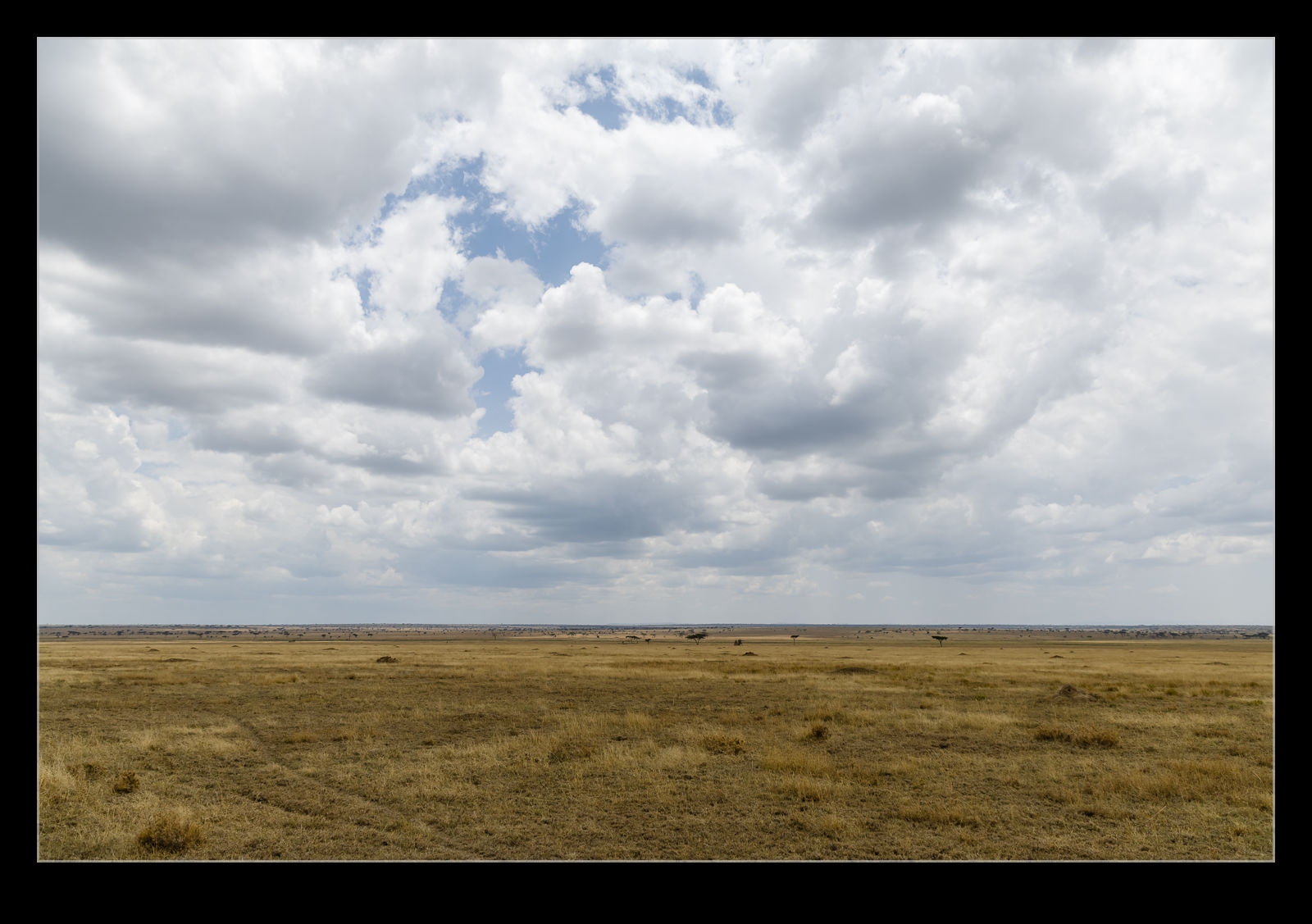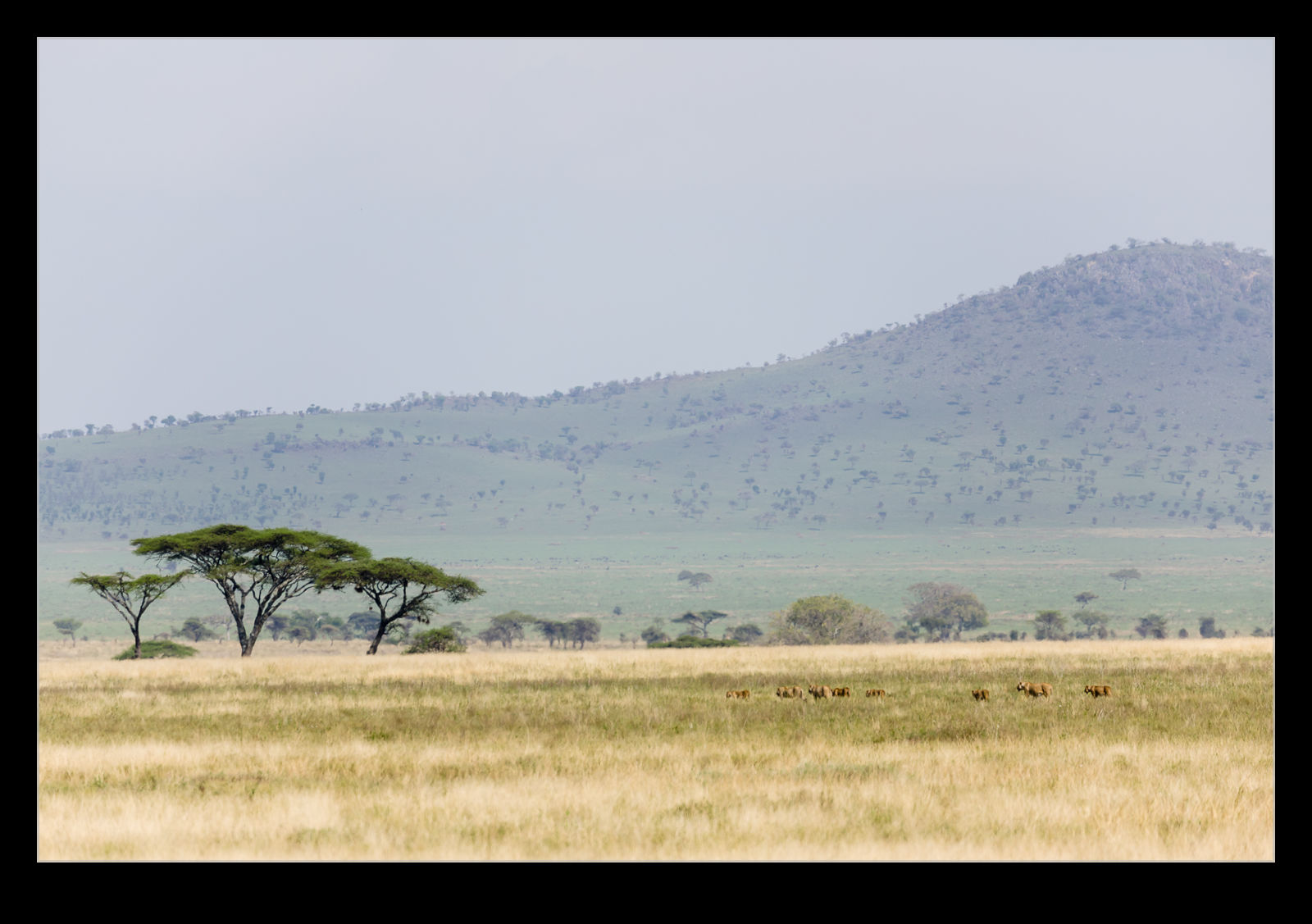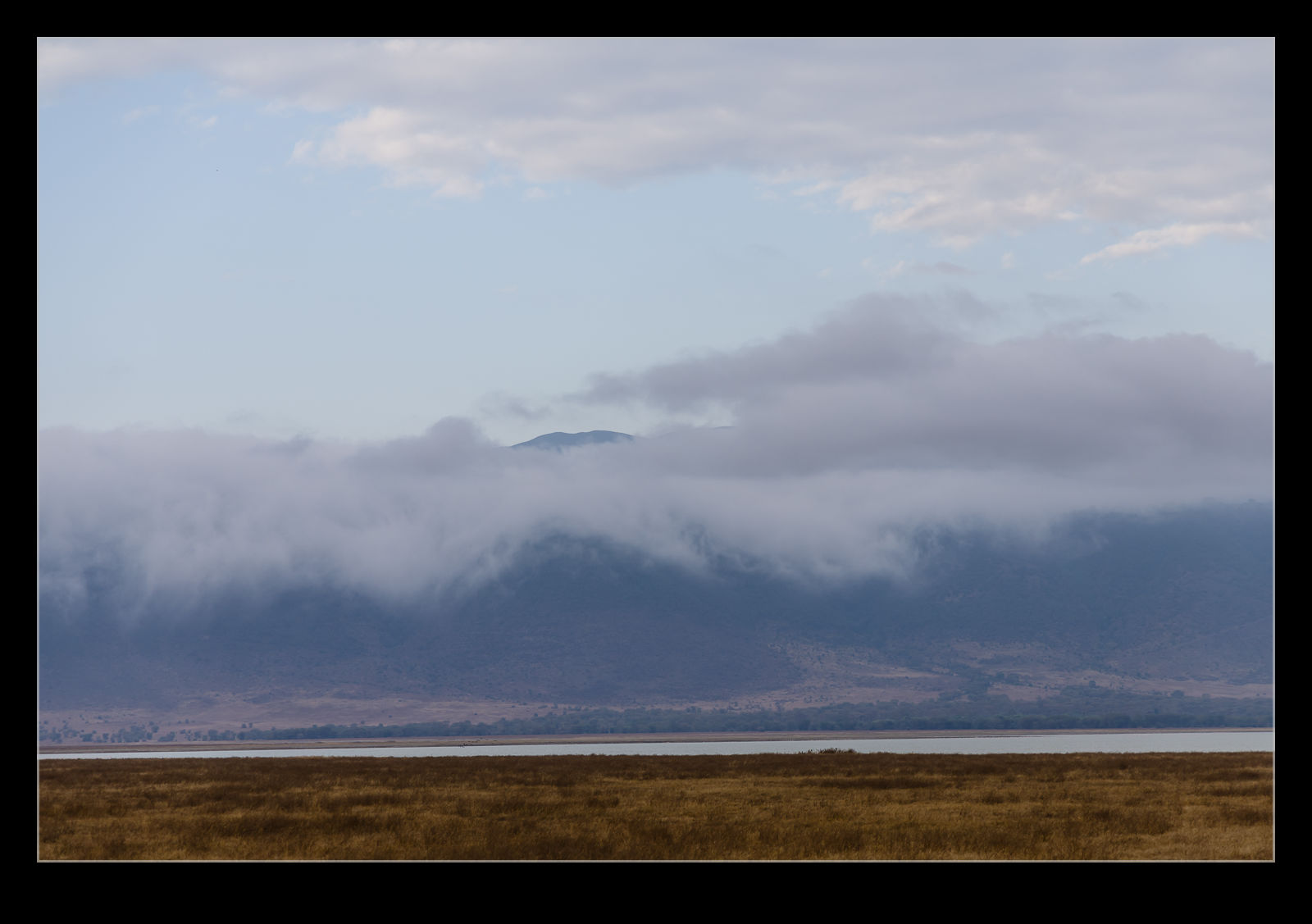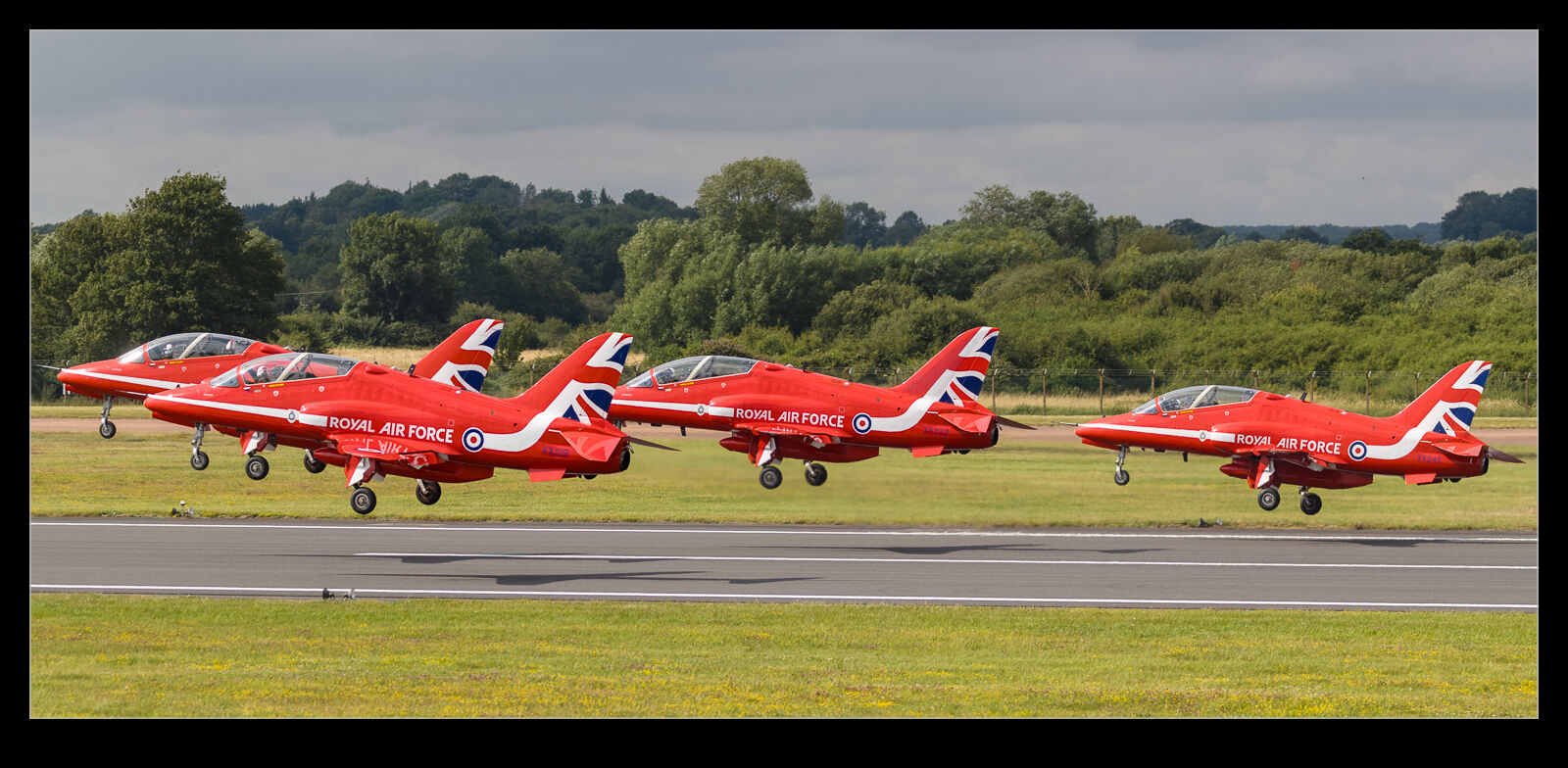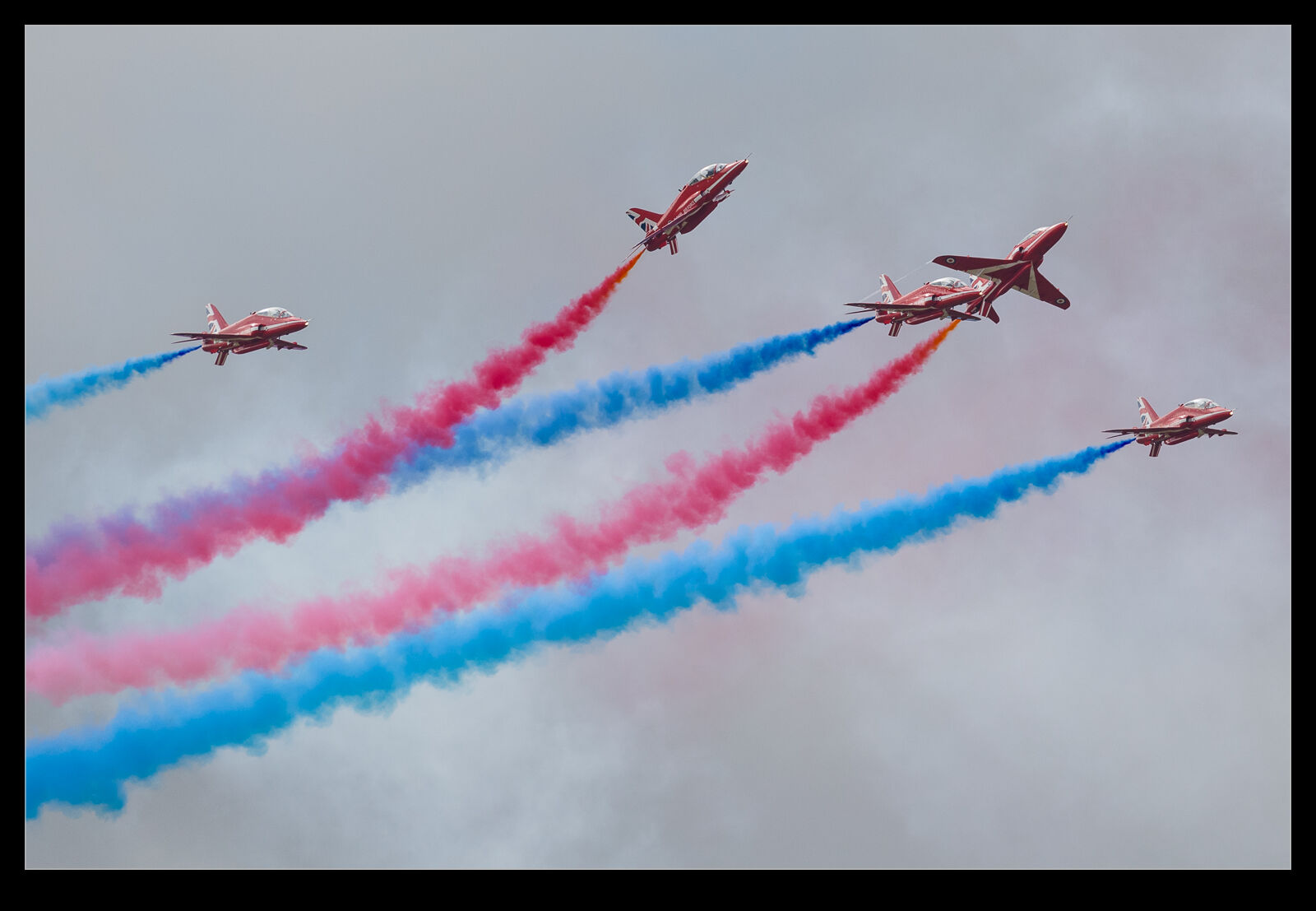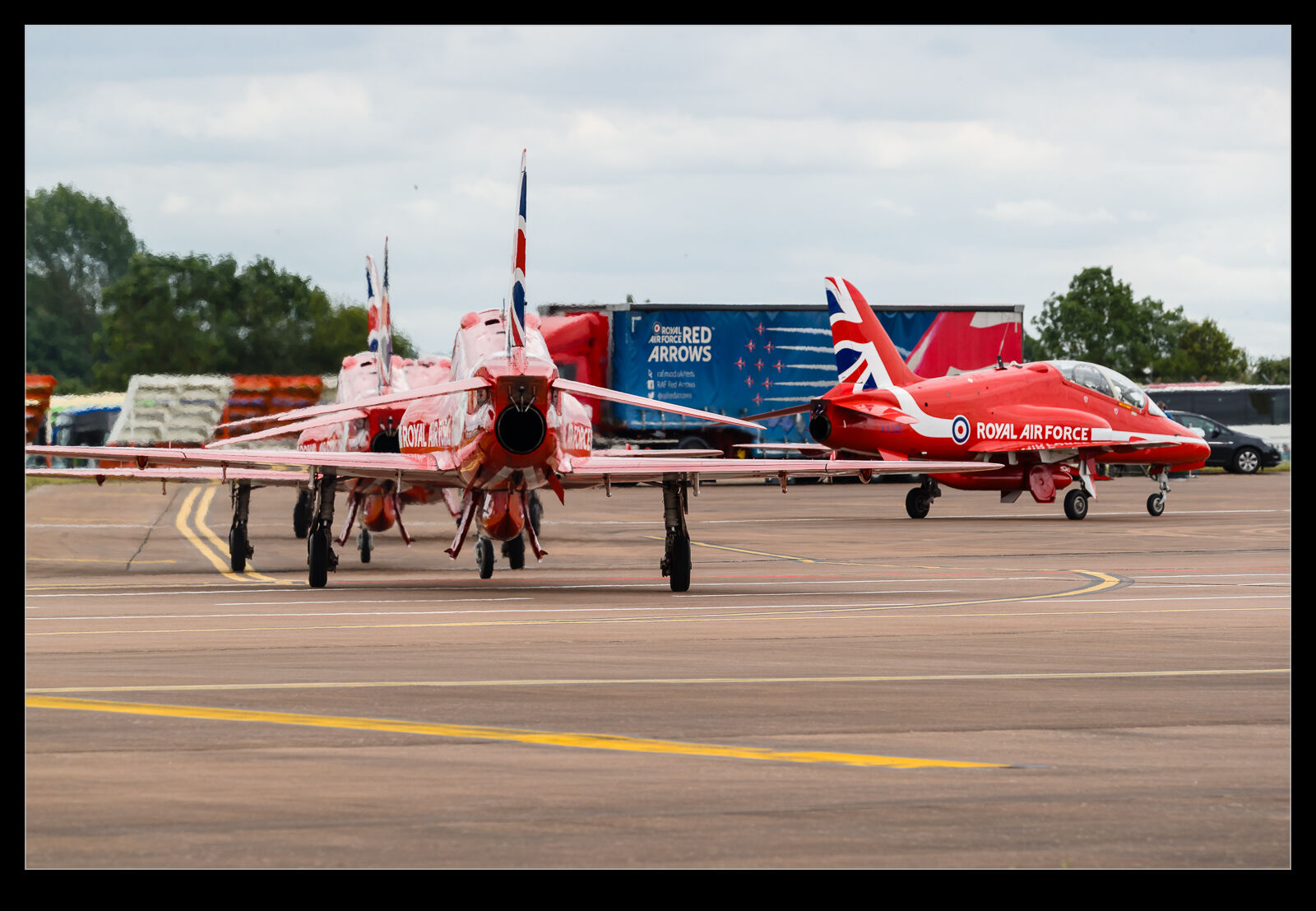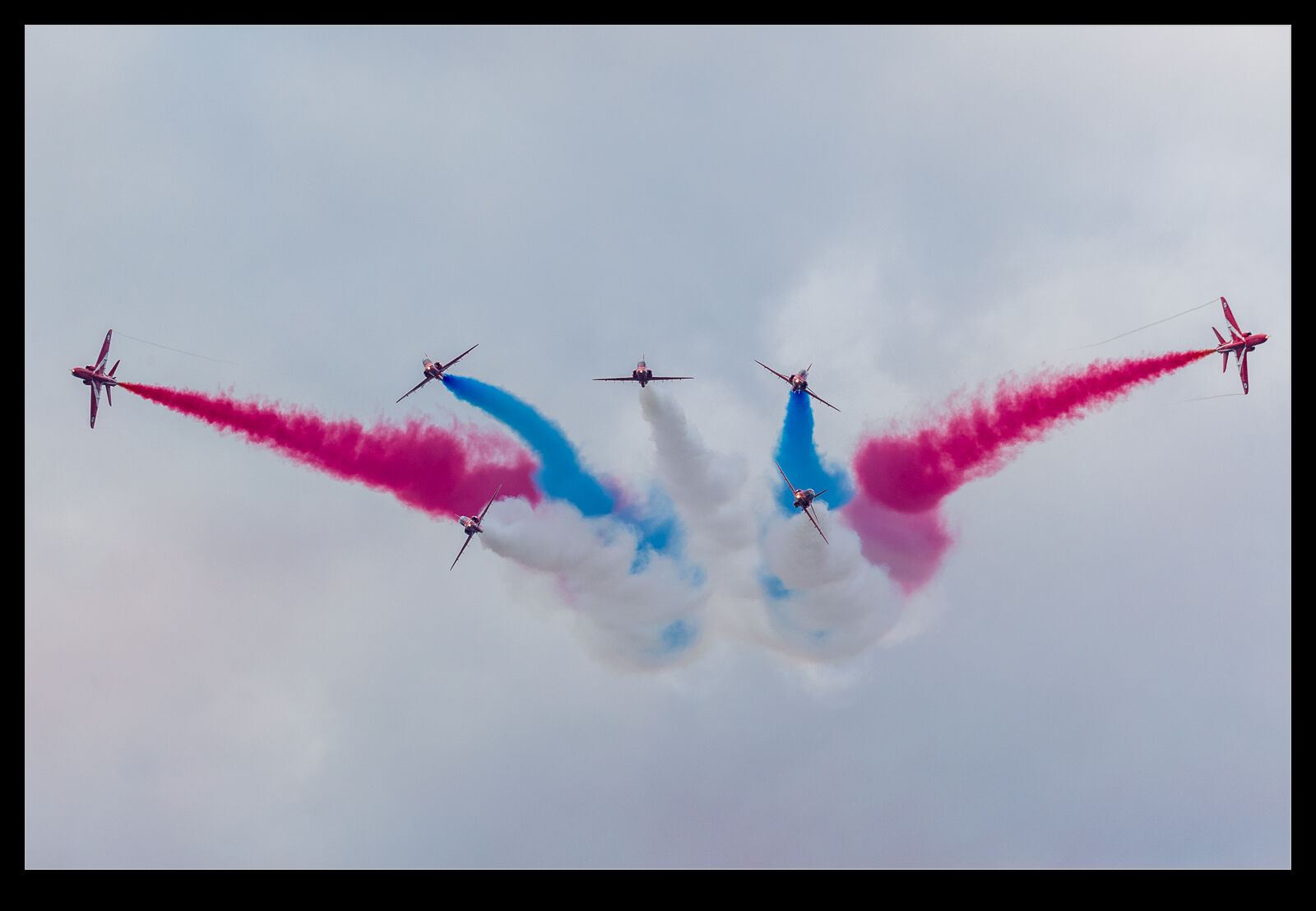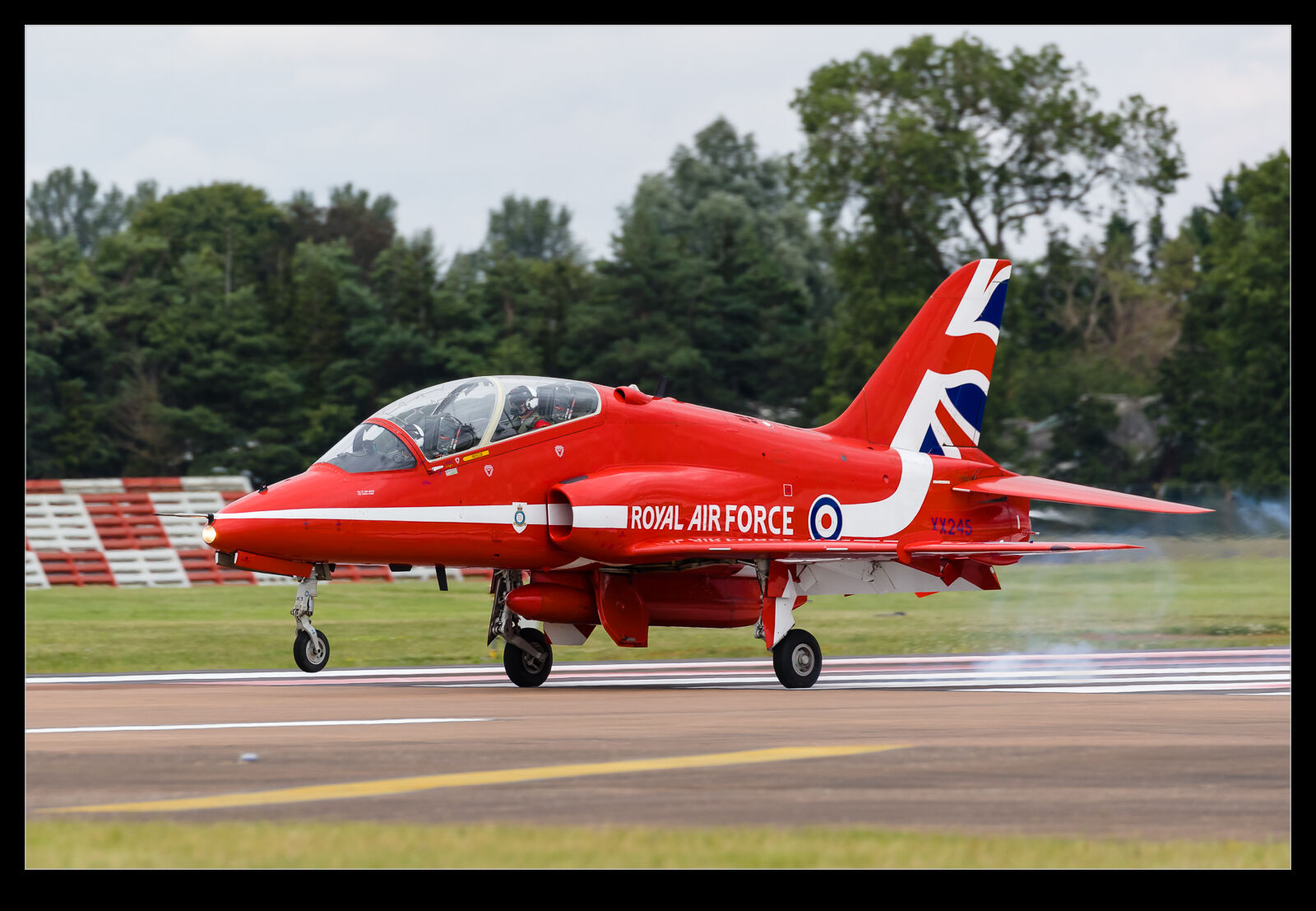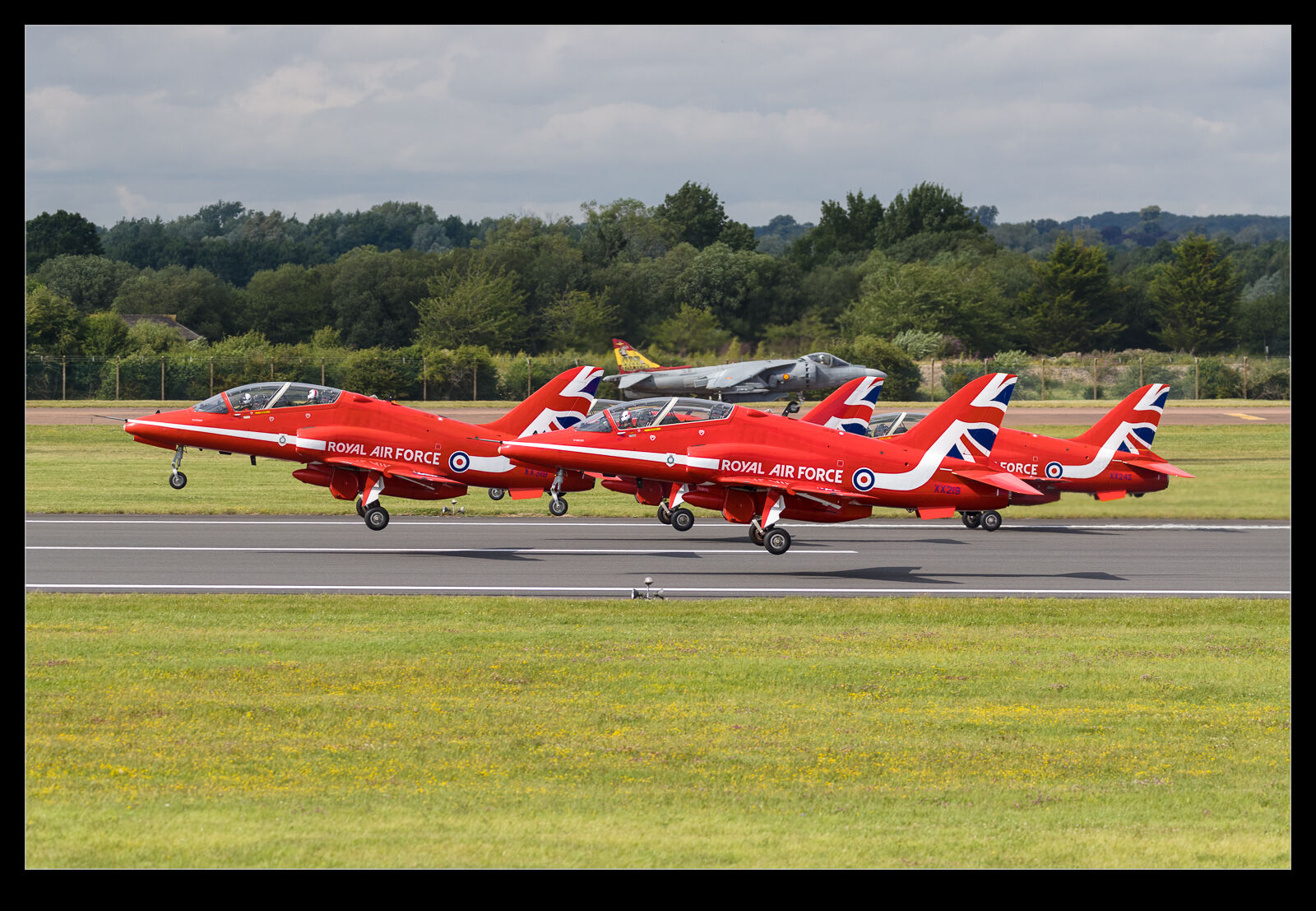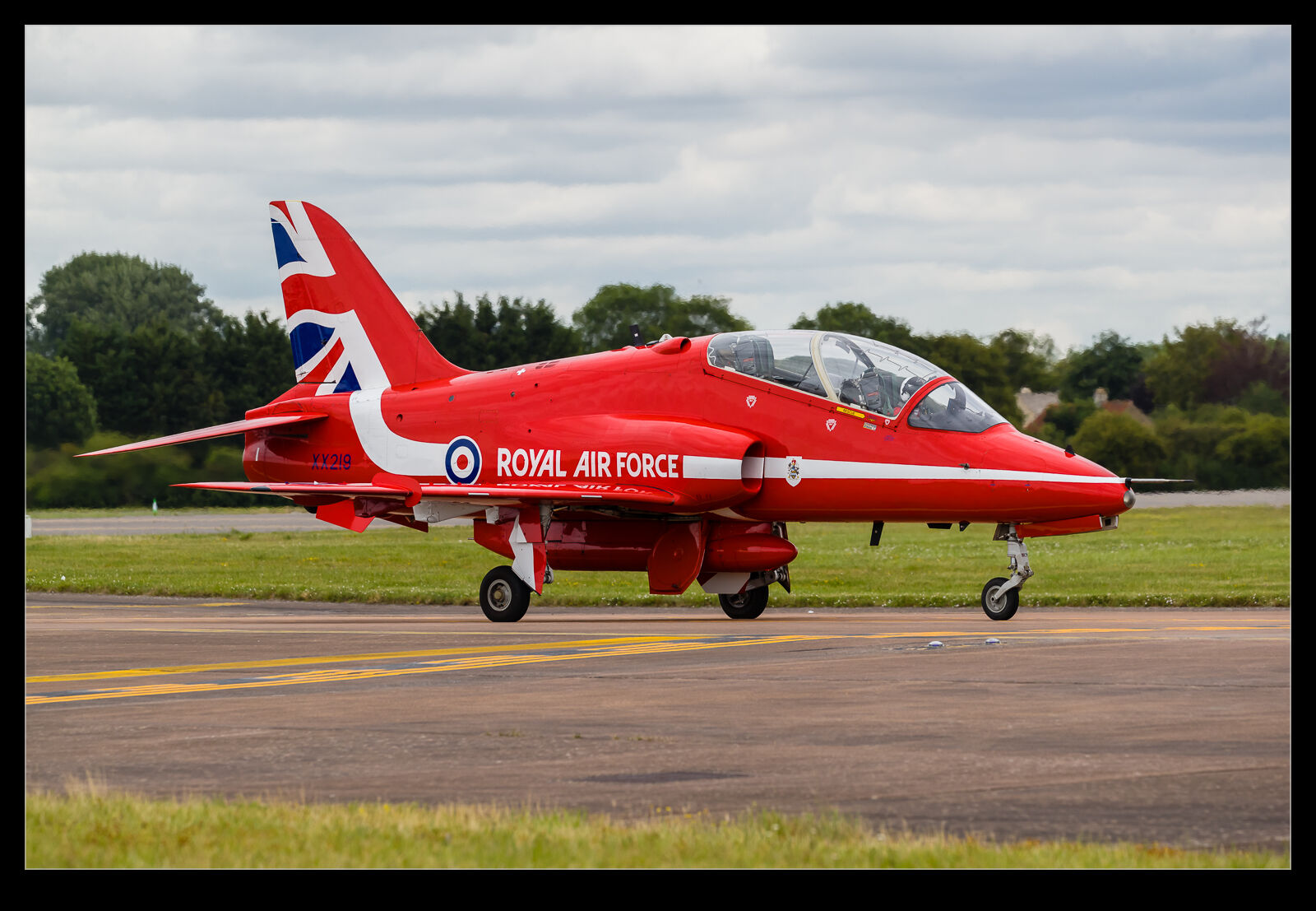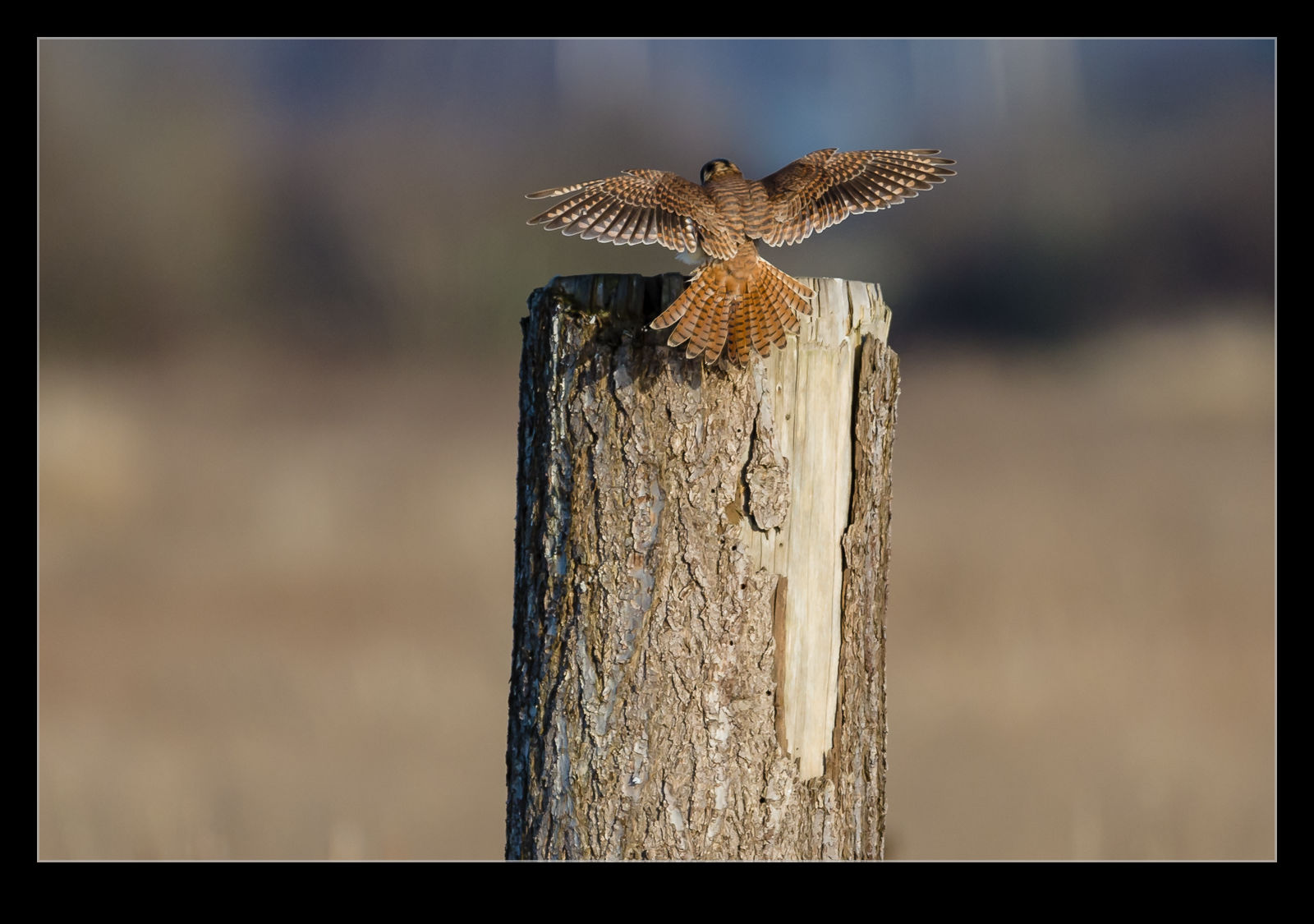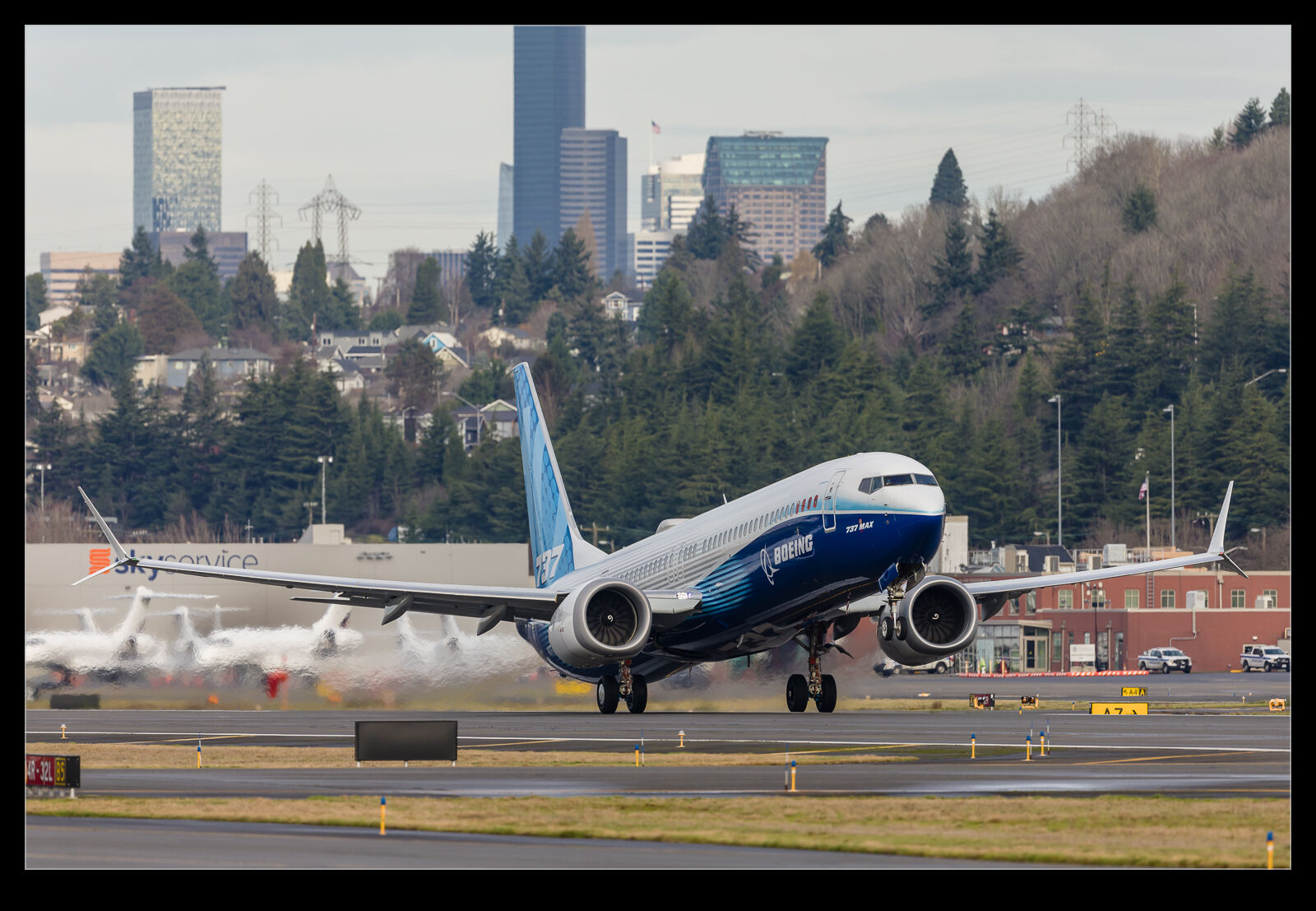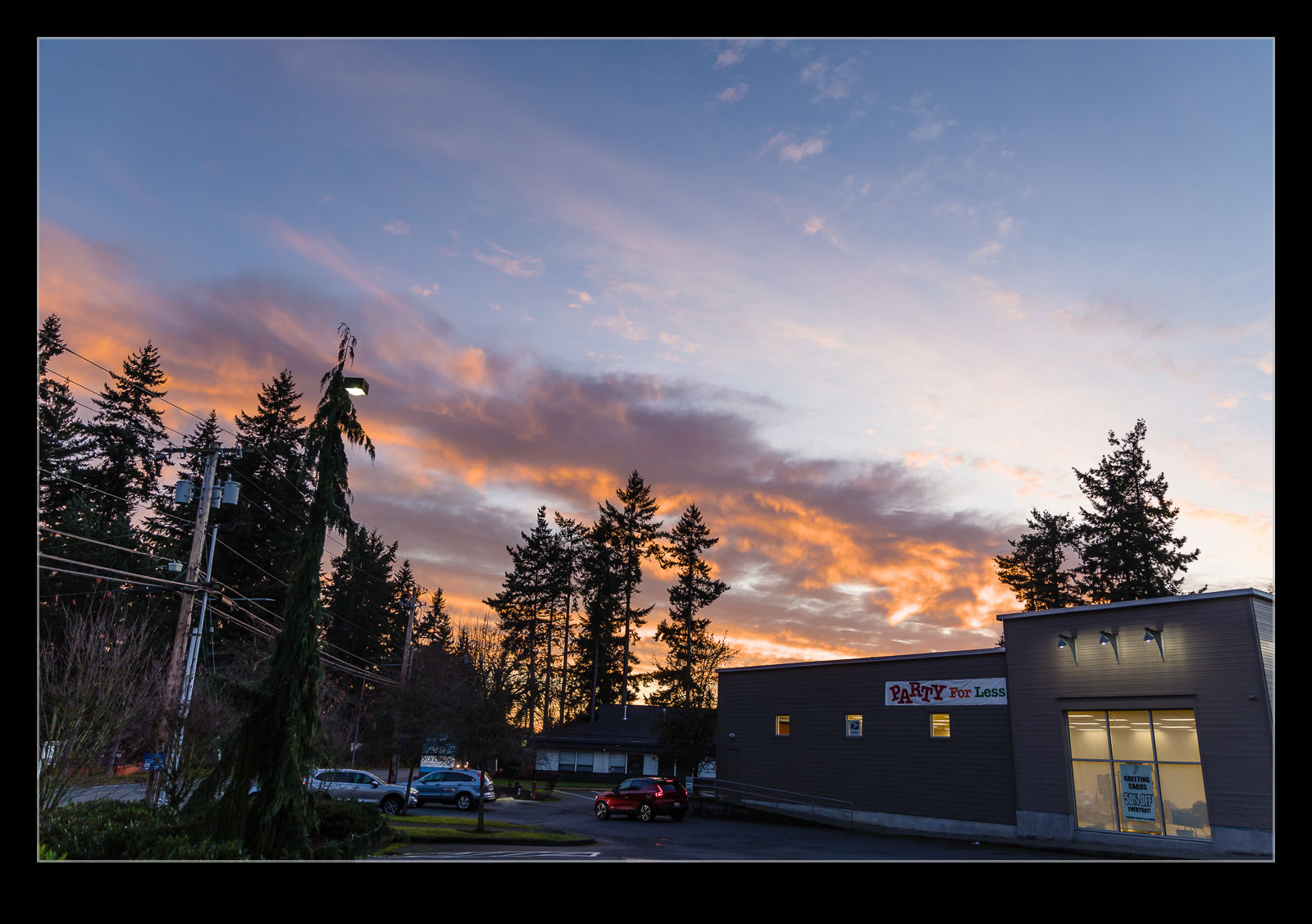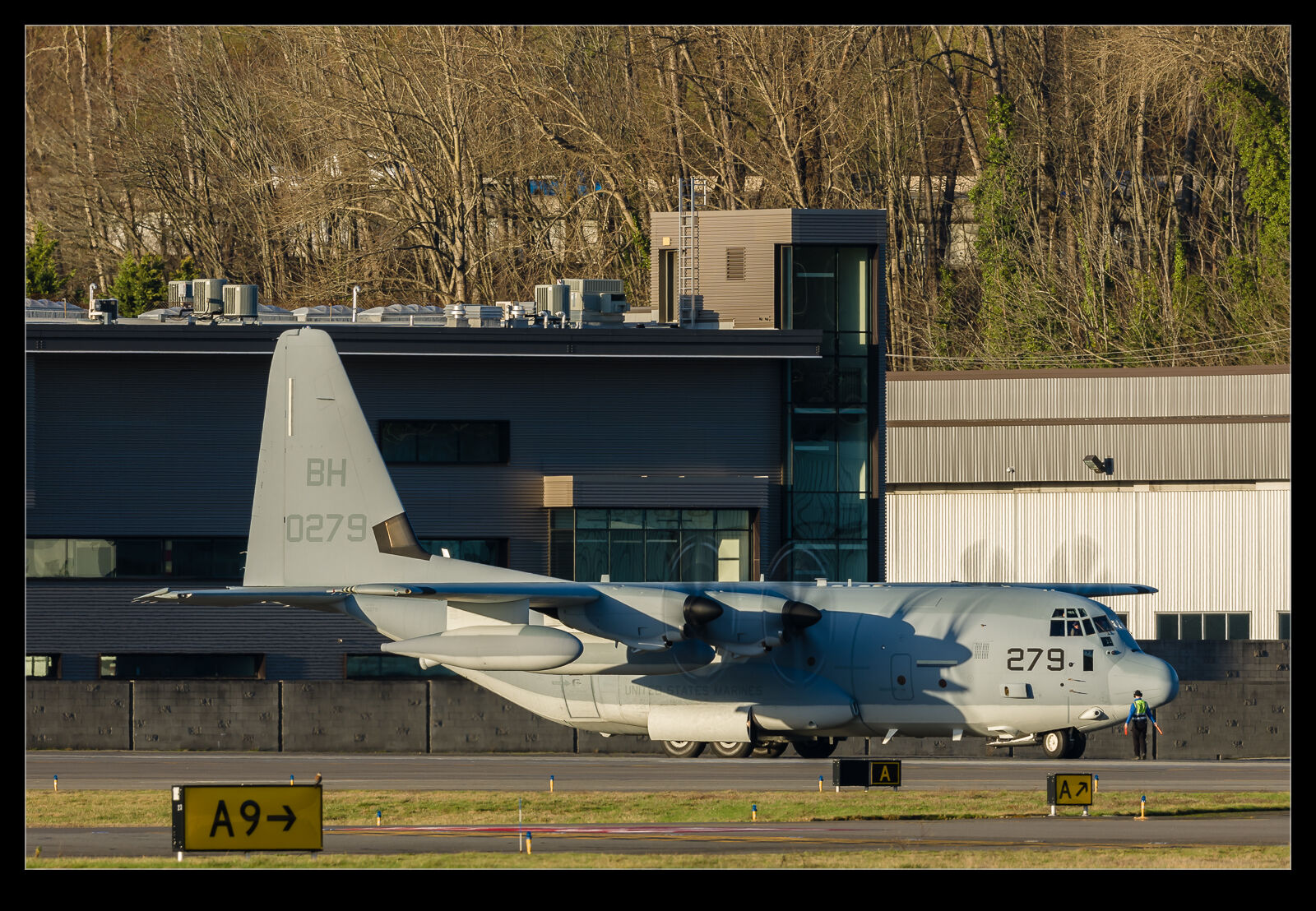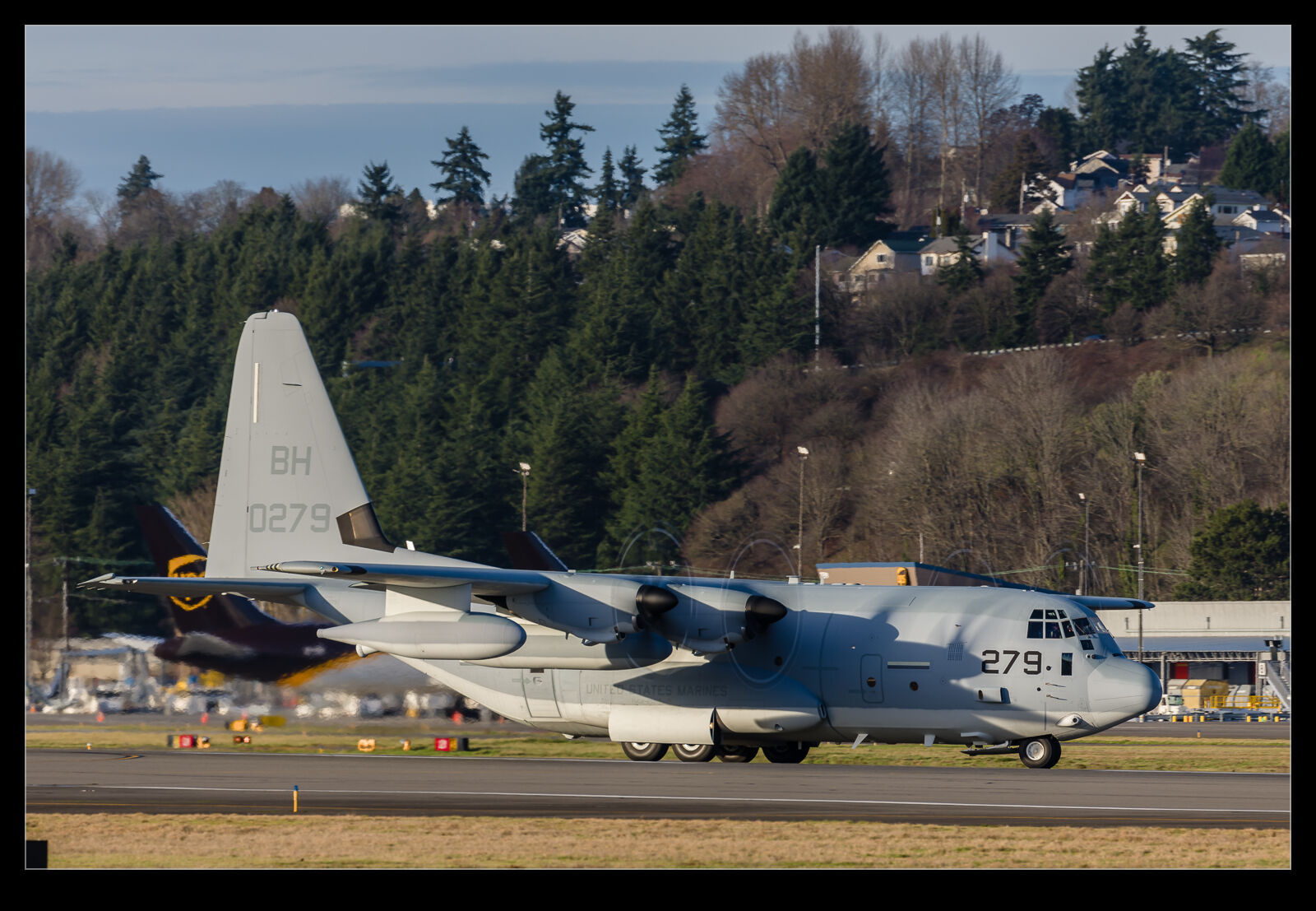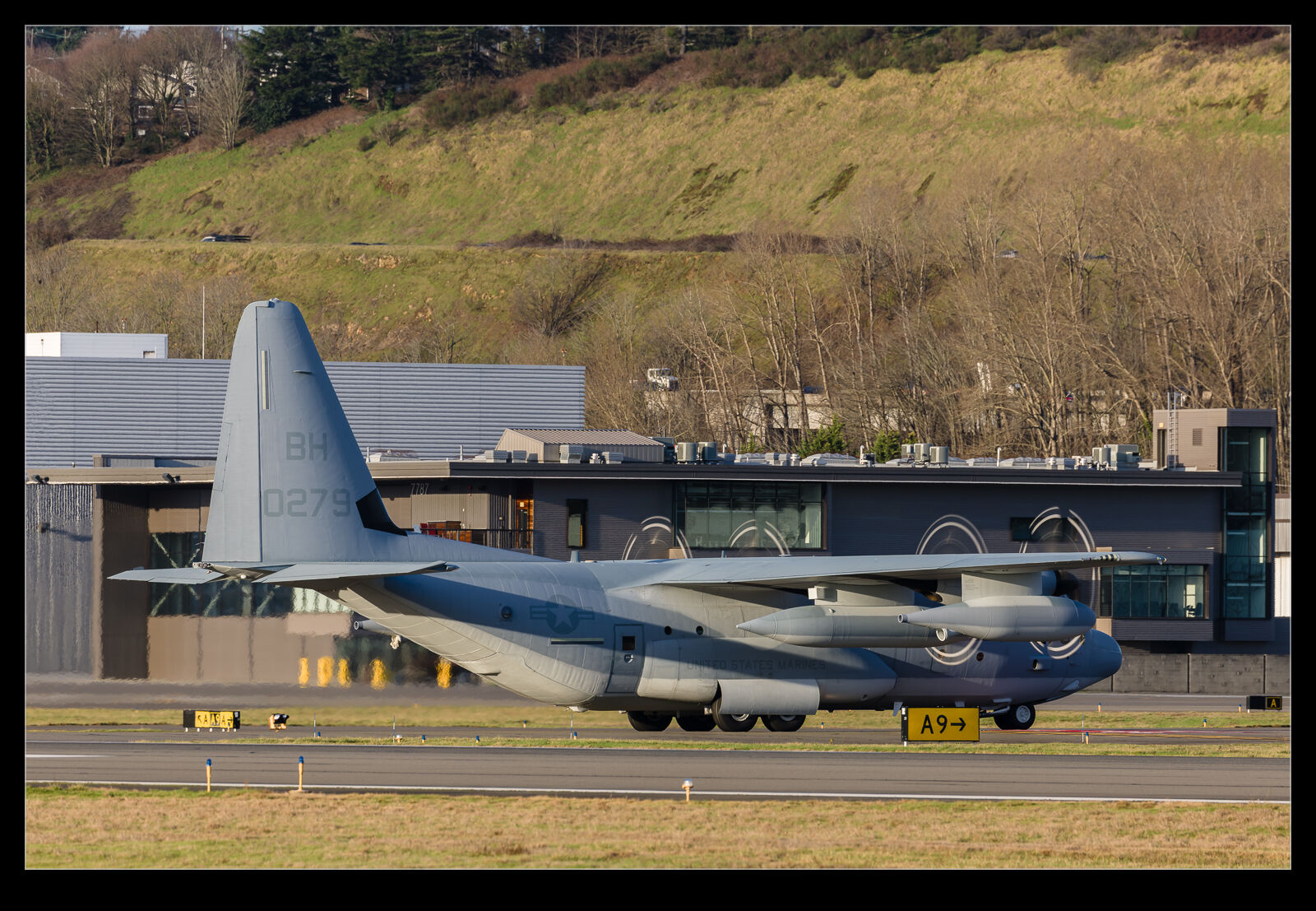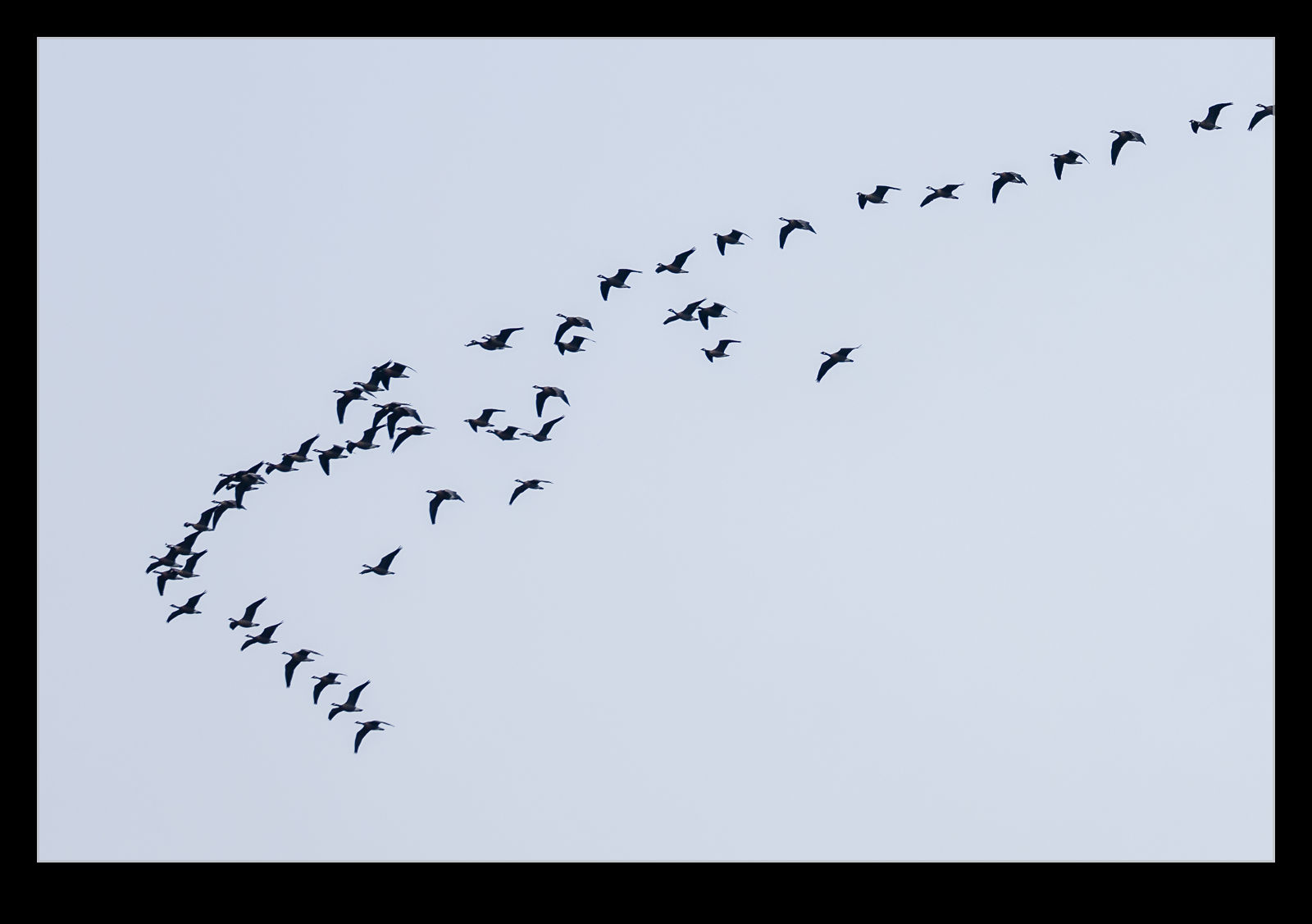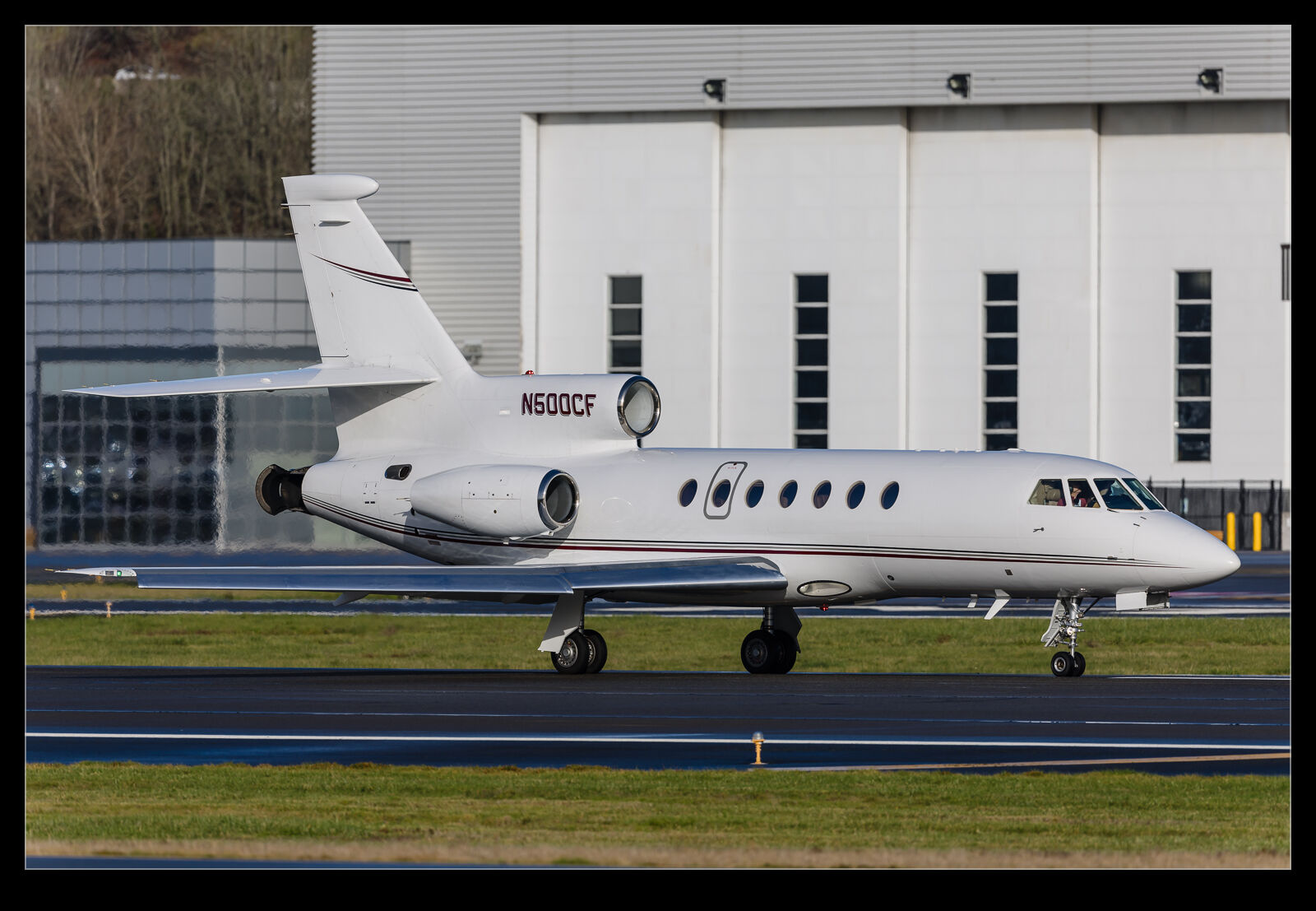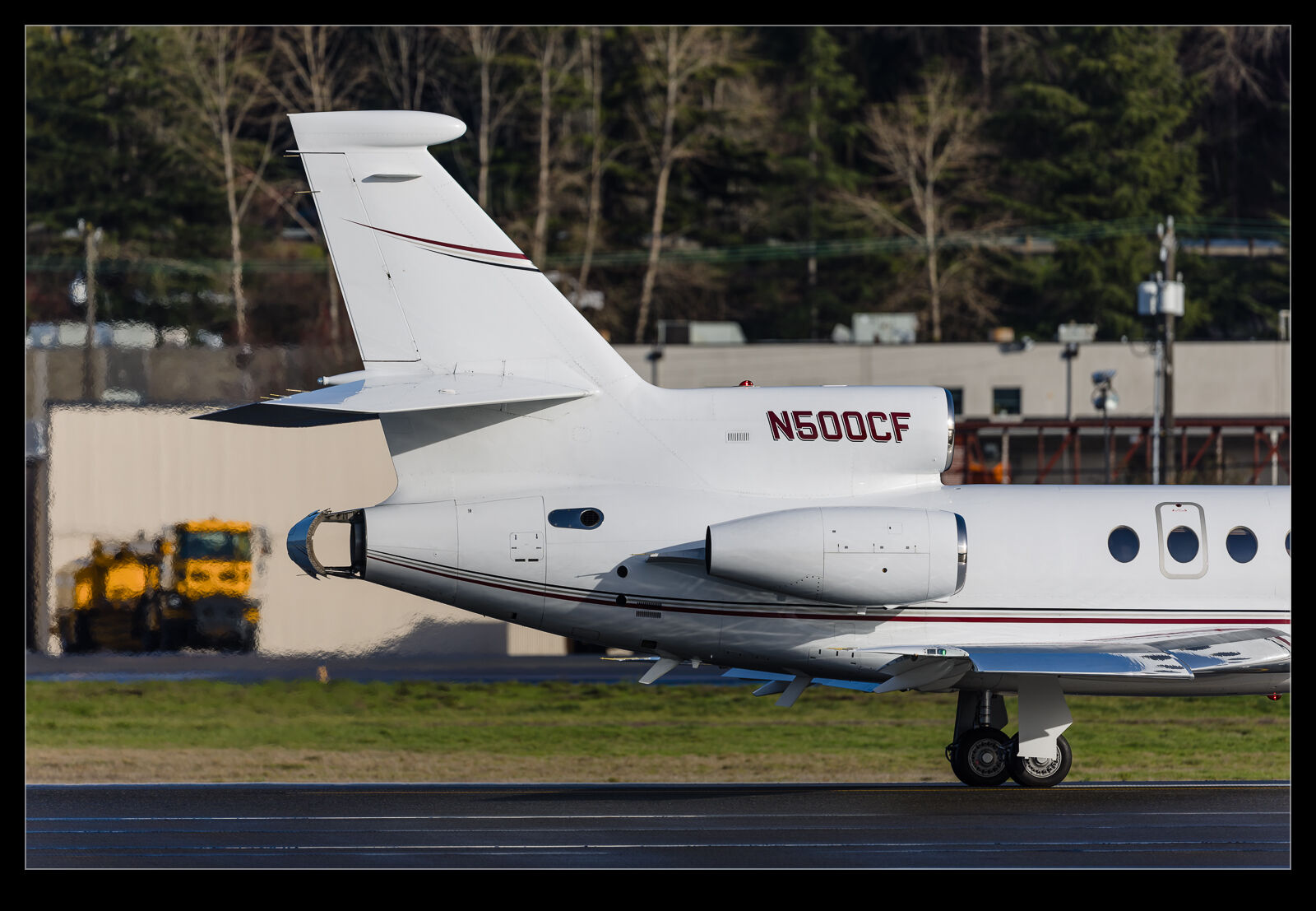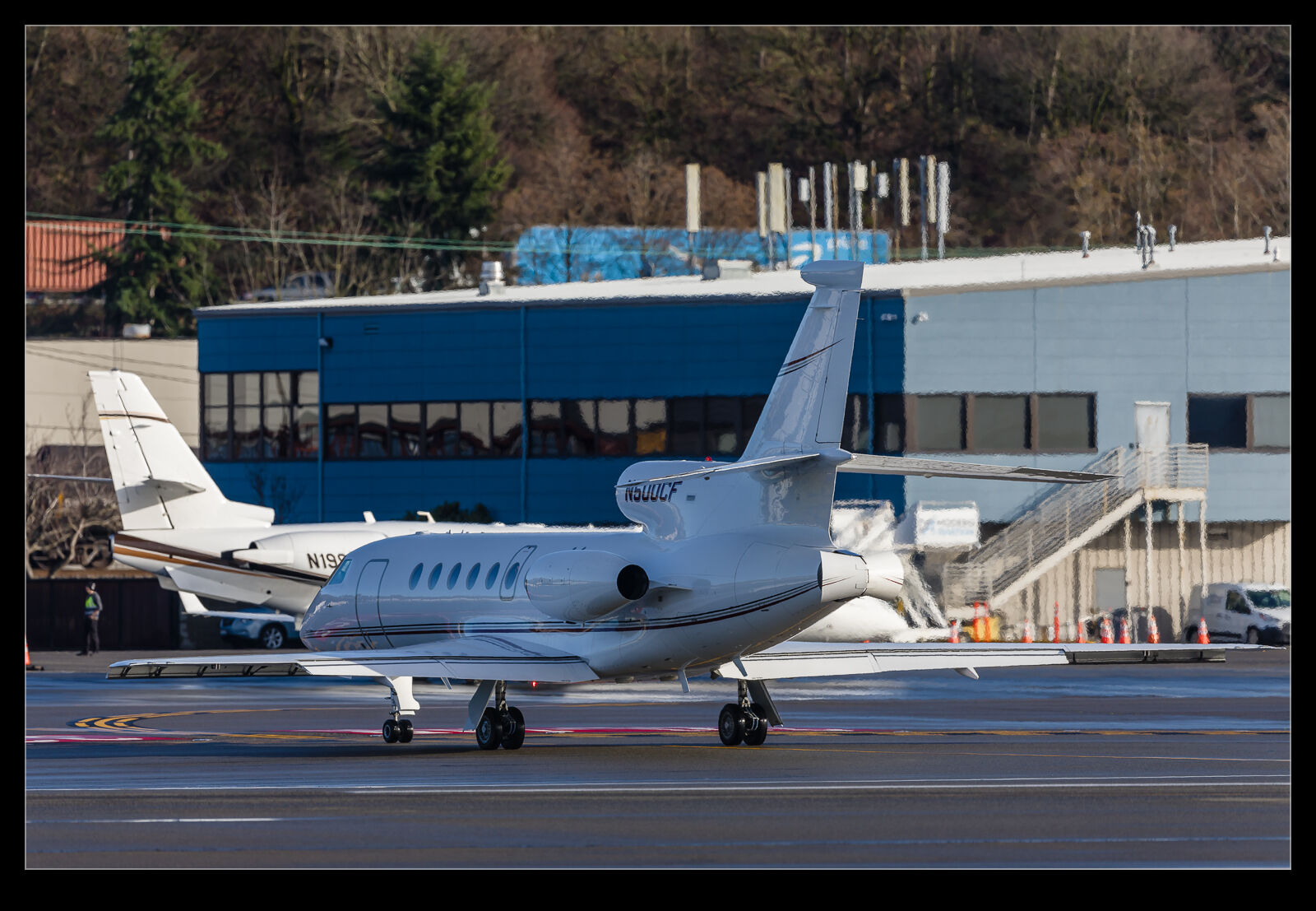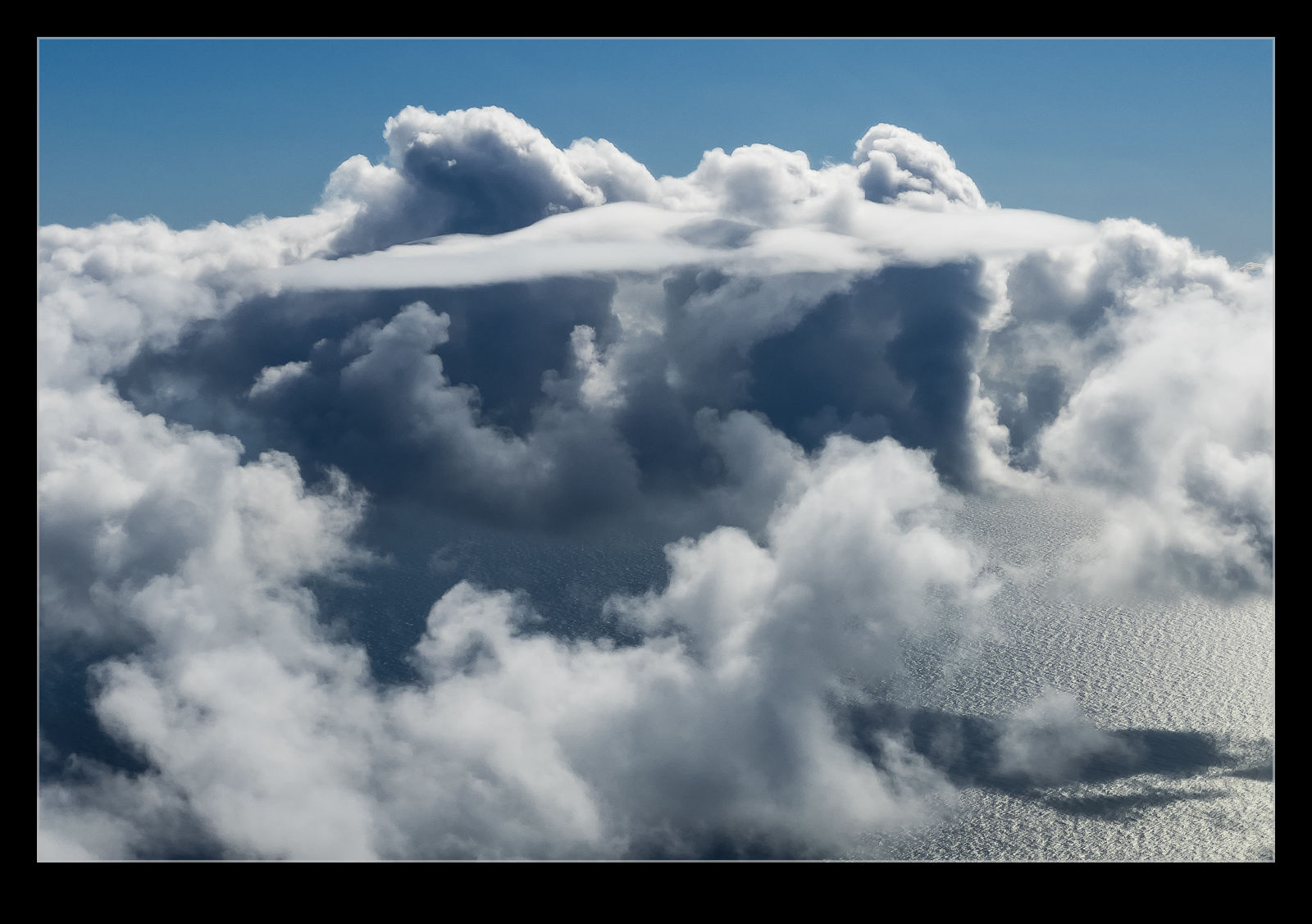 I have had a couple of work trips that took me to LA in the recent past (how recent may depend on when this gets posted), and the weather has not been great for either of them. The second one coincided with some pretty horrendous weather for the region and our approach to LAX was a pretty bumpy one. We actually landed from the ocean side which is pretty unusual for LAX. The crew prepared the cabin for landing early and I decided the view of the cloud tops from the storm were worthy of video rather than stills. Here is the resulting video of our approach.
I have had a couple of work trips that took me to LA in the recent past (how recent may depend on when this gets posted), and the weather has not been great for either of them. The second one coincided with some pretty horrendous weather for the region and our approach to LAX was a pretty bumpy one. We actually landed from the ocean side which is pretty unusual for LAX. The crew prepared the cabin for landing early and I decided the view of the cloud tops from the storm were worthy of video rather than stills. Here is the resulting video of our approach.
Some of My Rides on Safari
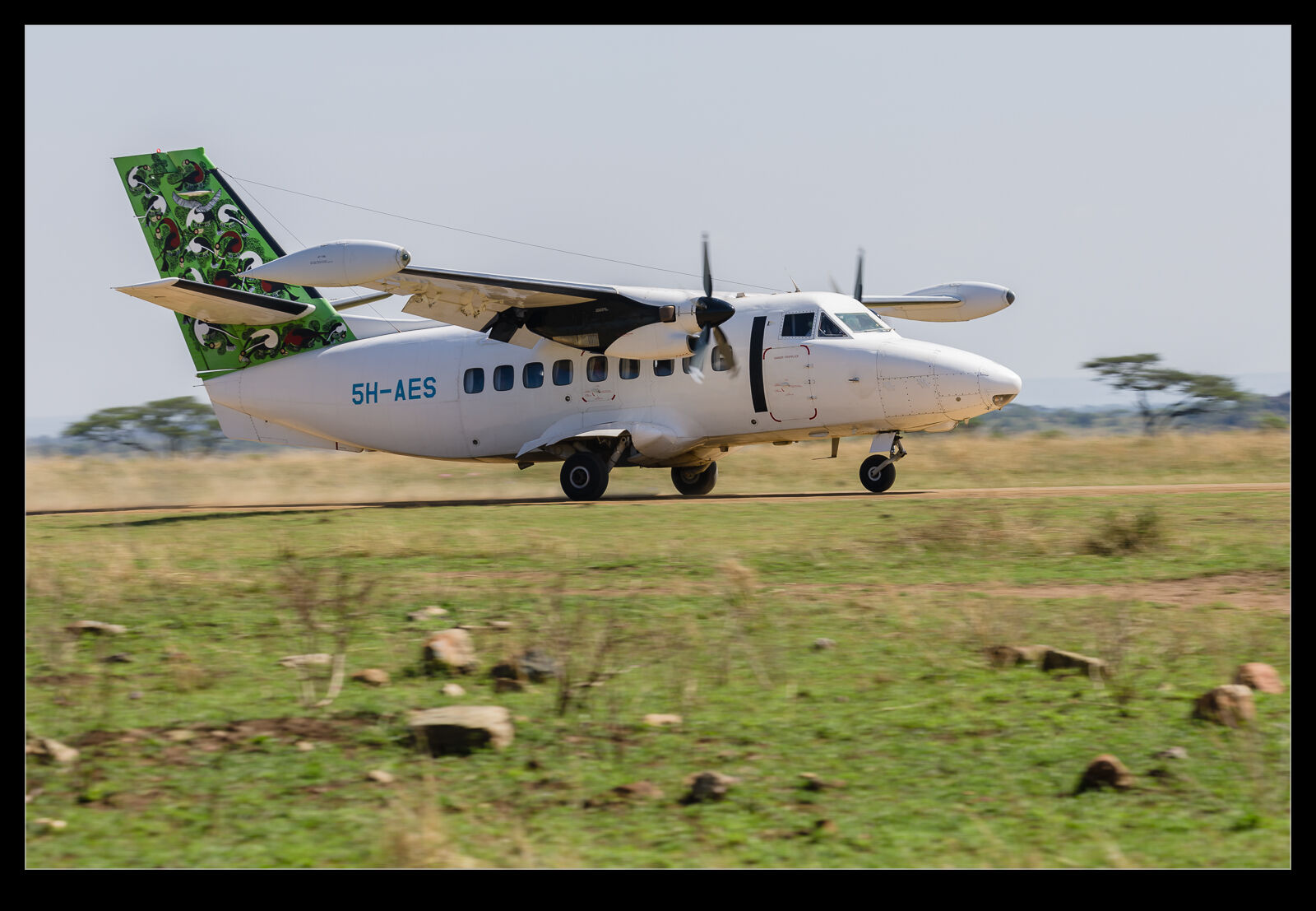 We took three internal flights while we were in Kenya and Tanzania and all three were interesting aircraft. Better still, they were all different types. One was a new one for me to fly on, but you might be surprised as to which that was. Our first trip was on a Let 410. It took us from the Serengeti to a short strip just short of the border with Kenya. This wasn’t my first ride in a 410 but it was my first landing. Previously I jumped out of one as part of a tandem skydive. This one had far more comfortable seating.
We took three internal flights while we were in Kenya and Tanzania and all three were interesting aircraft. Better still, they were all different types. One was a new one for me to fly on, but you might be surprised as to which that was. Our first trip was on a Let 410. It took us from the Serengeti to a short strip just short of the border with Kenya. This wasn’t my first ride in a 410 but it was my first landing. Previously I jumped out of one as part of a tandem skydive. This one had far more comfortable seating.
 Once we crossed the border, we took another flight into the Maasai Mara. This was on a type that is ubiquitous in the area – the Cessna 208B Grand Caravan. I have never been on one of these. They were very densely configured and getting through the cabin to a seat was quite an effort. I don’t care to think what getting out in a hurry might be like! We saw so many of these with different operators over the course of our visit.
Once we crossed the border, we took another flight into the Maasai Mara. This was on a type that is ubiquitous in the area – the Cessna 208B Grand Caravan. I have never been on one of these. They were very densely configured and getting through the cabin to a seat was quite an effort. I don’t care to think what getting out in a hurry might be like! We saw so many of these with different operators over the course of our visit.
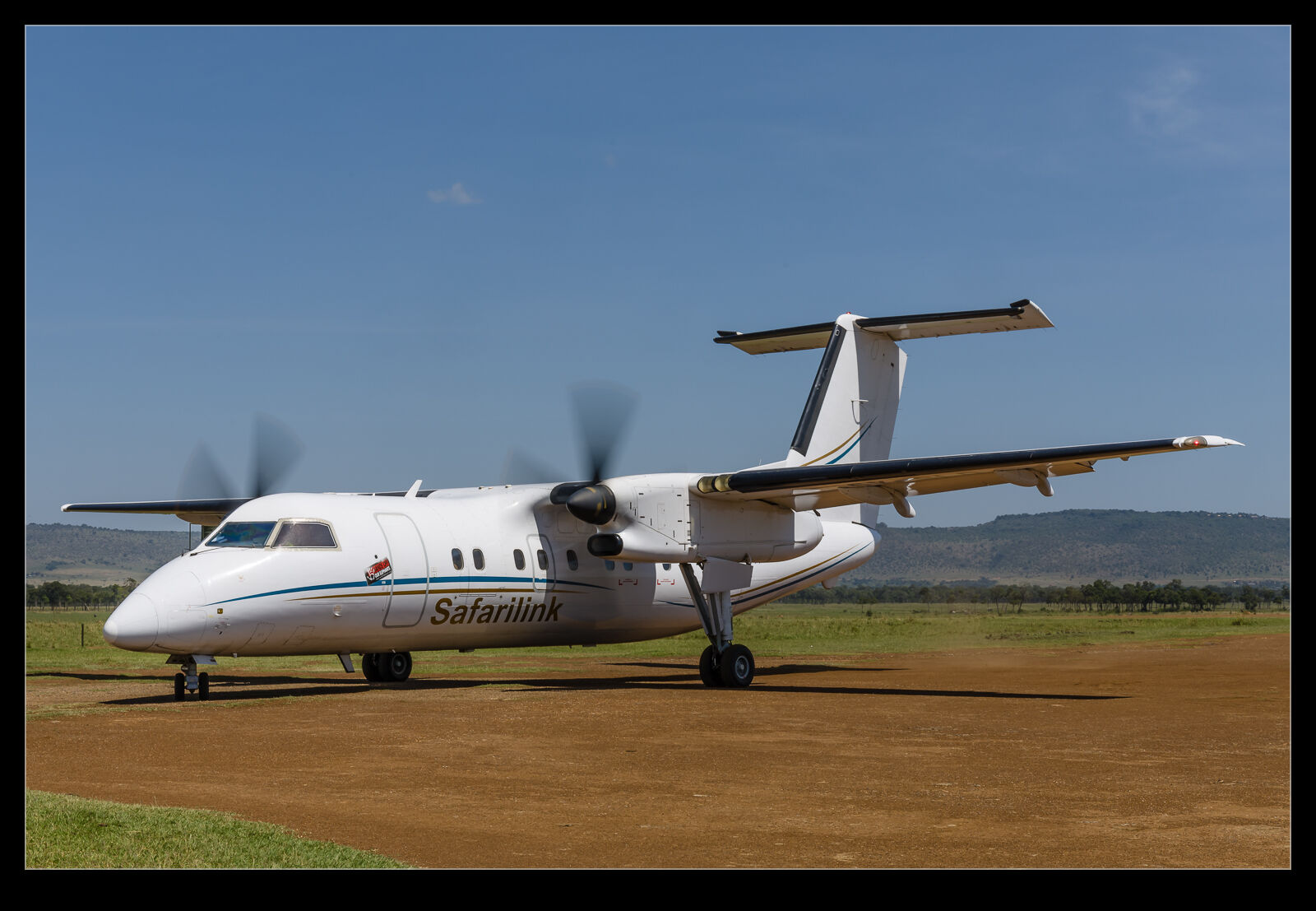 The last type we flew was a Dash 8 100 Series. A far larger type than the others, this flies some heavier routes, and these might involve multiple stops along the way picking up and dropping off customers. Ours picked us up in the Mara and took us direct to Nairobi. No intermediate stops for us. It has been a long time since I flew in an early generation Dash 8, and I hadn’t thought of them as doing rough field ops. However, supporting remote communities is part of their history so of course they are fine on these strips. Unfortunately, heavy rains at the strip 90 seconds from our camp meant we had to drive for forty minutes to another strip to make this flight. It was a good trip, though. This part of the world was great for people like me that like close up encounters with aviation!
The last type we flew was a Dash 8 100 Series. A far larger type than the others, this flies some heavier routes, and these might involve multiple stops along the way picking up and dropping off customers. Ours picked us up in the Mara and took us direct to Nairobi. No intermediate stops for us. It has been a long time since I flew in an early generation Dash 8, and I hadn’t thought of them as doing rough field ops. However, supporting remote communities is part of their history so of course they are fine on these strips. Unfortunately, heavy rains at the strip 90 seconds from our camp meant we had to drive for forty minutes to another strip to make this flight. It was a good trip, though. This part of the world was great for people like me that like close up encounters with aviation!
Can Pictures Explain the Space Appropriately?
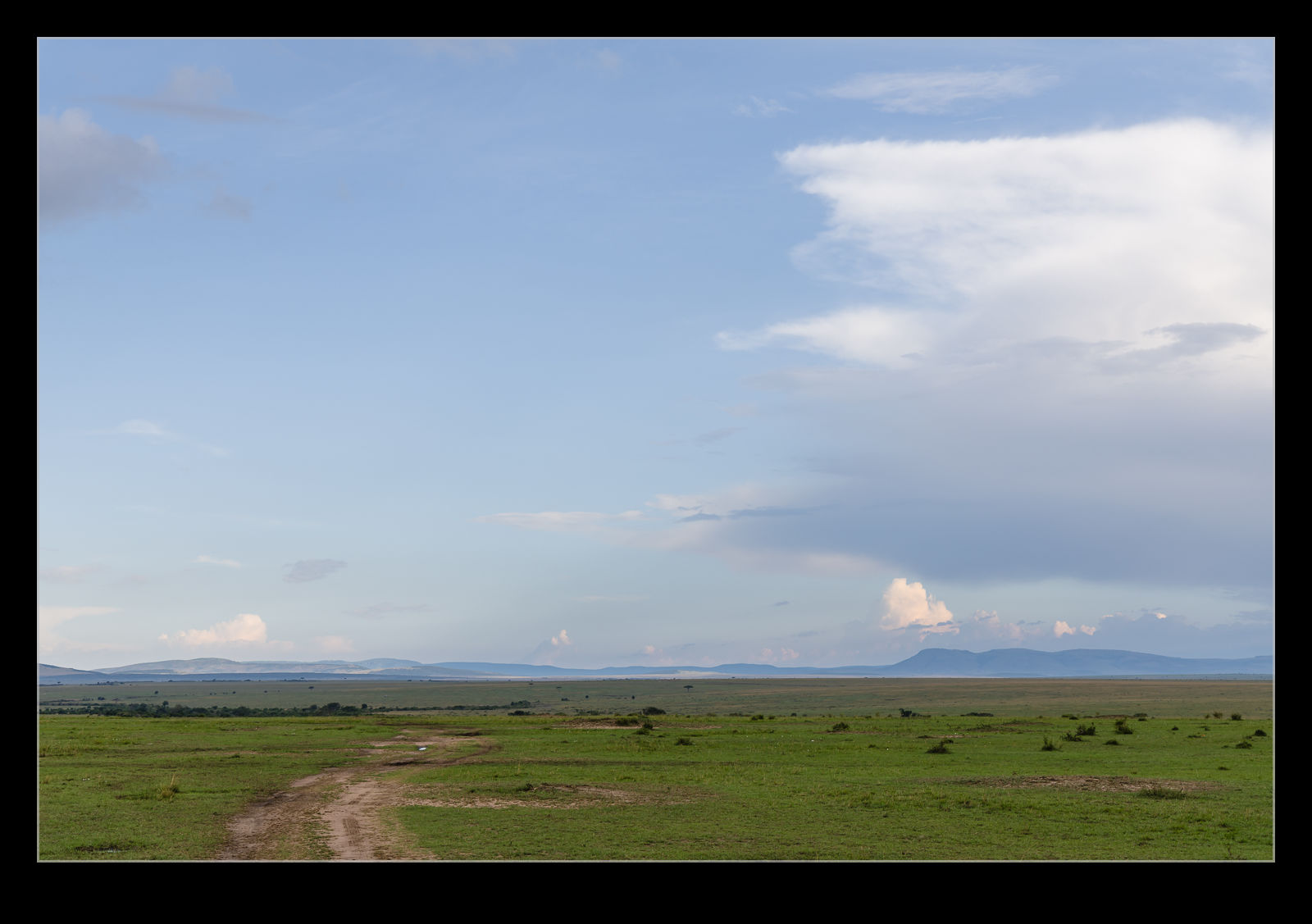 When I was first explaining to Nancy how amazing Yosemite was before we went there, we looked at pictures, but it was not possible for her to appreciate the scale of the place until she saw it for herself. I think the same is true of our trip to Kenya and Tanzania. The wildlife was a wonderful part of the trip and the reason for being there, but I should not avoid pointing out how wonderful the scenery was too. The vast expanses of open plains, the mountains in the distance, the hills surrounding where we stayed – all of these were quite breathtaking.
When I was first explaining to Nancy how amazing Yosemite was before we went there, we looked at pictures, but it was not possible for her to appreciate the scale of the place until she saw it for herself. I think the same is true of our trip to Kenya and Tanzania. The wildlife was a wonderful part of the trip and the reason for being there, but I should not avoid pointing out how wonderful the scenery was too. The vast expanses of open plains, the mountains in the distance, the hills surrounding where we stayed – all of these were quite breathtaking.
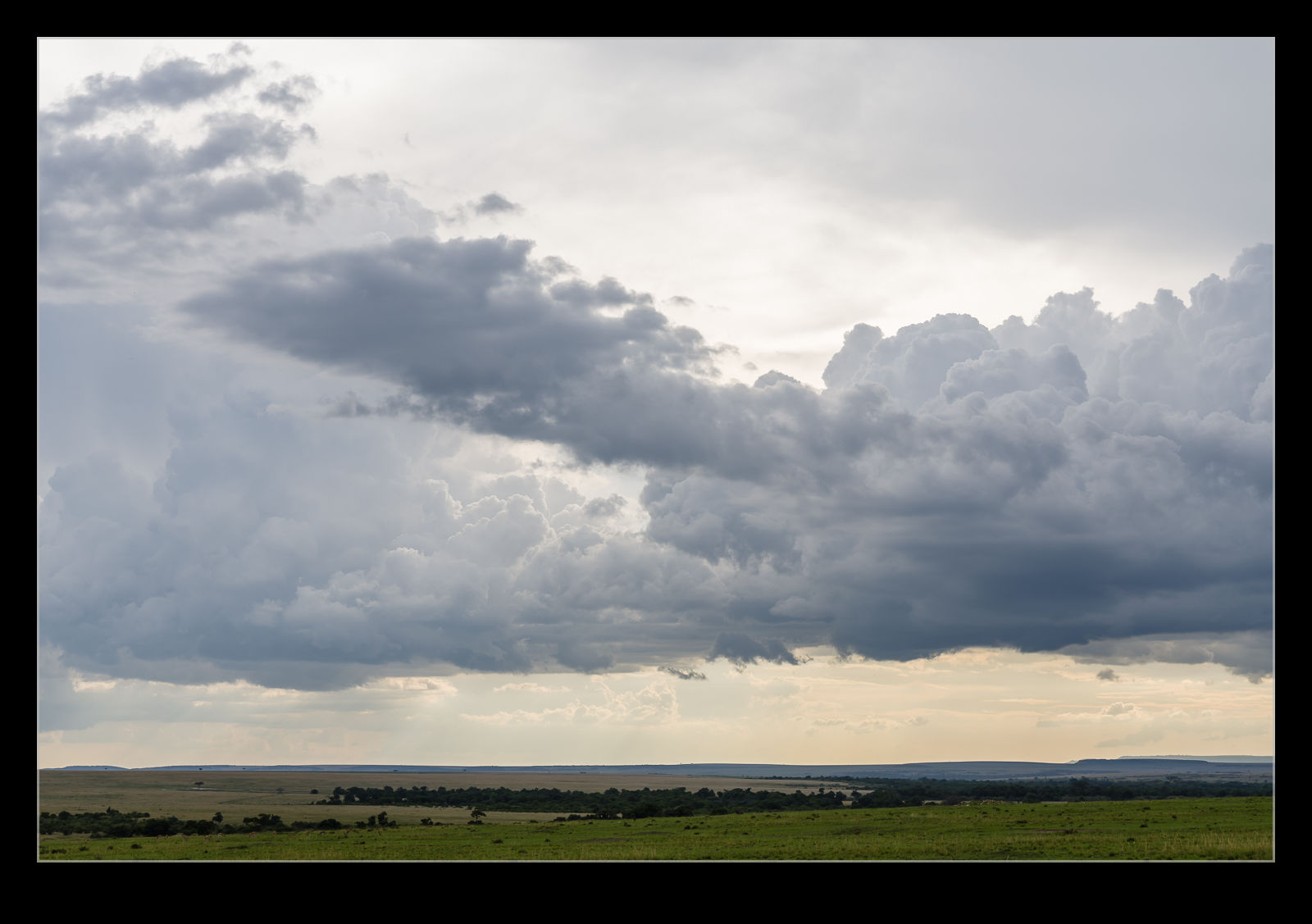 Sadly, 1600 pixels across a single image is not really going to give the true impression of these locations. I have shots to share and here they are, but I doubt it will have a significant impression on someone looking at these versus any other shot of open space. Indeed, wide open plains look pretty weak on a small image. There is nothing to focus on to give you a sense of scale. Despite this, I do think it is fair to say that the landscapes we saw were quite amazing. They won’t have the impact the animals have on people looking at the blog but, if you do go, be ready for some stunning locations.
Sadly, 1600 pixels across a single image is not really going to give the true impression of these locations. I have shots to share and here they are, but I doubt it will have a significant impression on someone looking at these versus any other shot of open space. Indeed, wide open plains look pretty weak on a small image. There is nothing to focus on to give you a sense of scale. Despite this, I do think it is fair to say that the landscapes we saw were quite amazing. They won’t have the impact the animals have on people looking at the blog but, if you do go, be ready for some stunning locations.
A Little RIAT Reds Editing
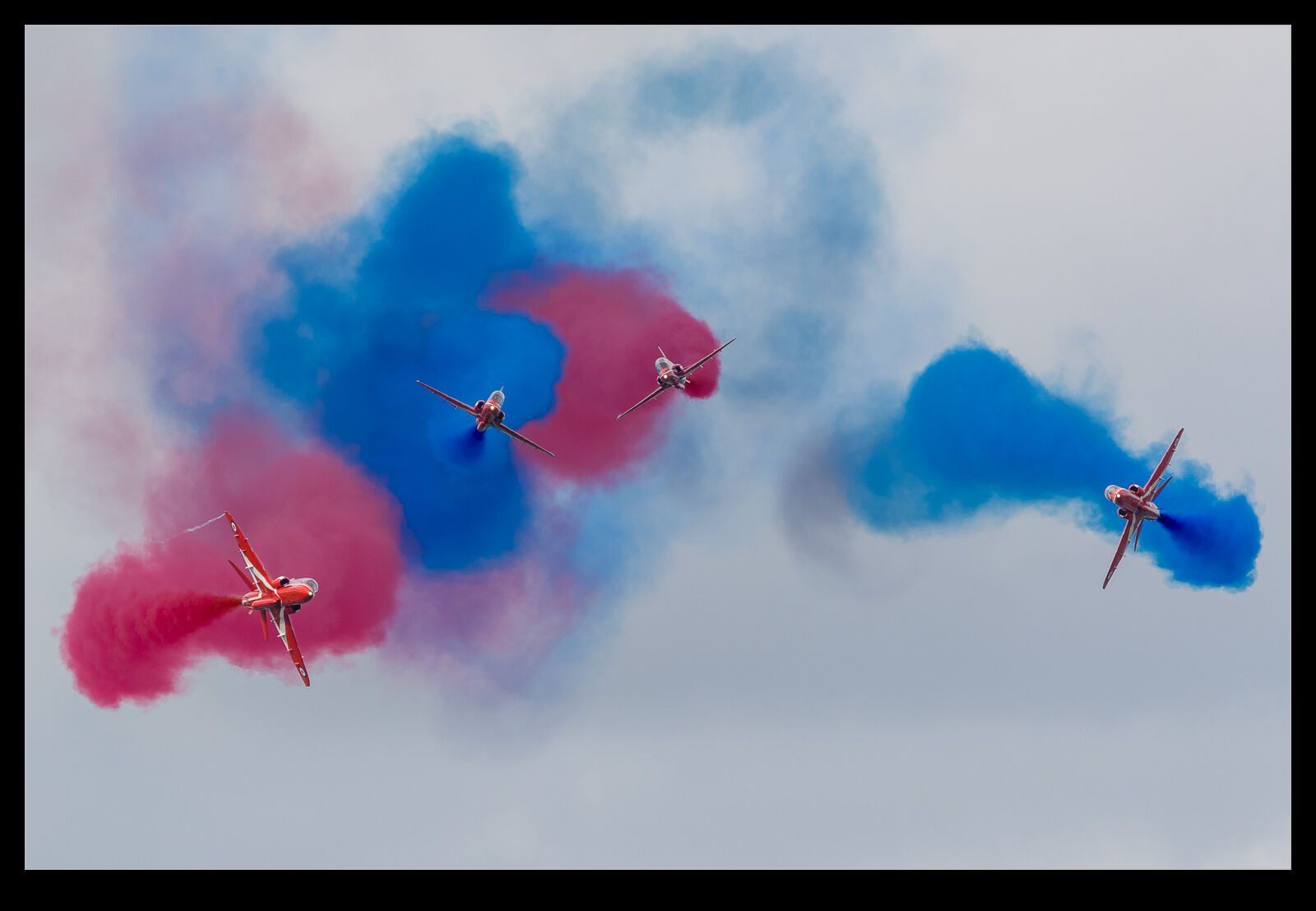 Why, when my last visit to RIAT was in 2019, am I still working my way through some shots from that show? There are many potential reasons but none of them reflect too well on me so we shall move past that topic and on to what I shot at that show. Specifically, let’s look at the Red Arrows. When we used to live in the UK, we would see the Reds on a regular basis and would sometimes get a bit blasé about them. When you live elsewhere, they become a bit more fun to see.
Why, when my last visit to RIAT was in 2019, am I still working my way through some shots from that show? There are many potential reasons but none of them reflect too well on me so we shall move past that topic and on to what I shot at that show. Specifically, let’s look at the Red Arrows. When we used to live in the UK, we would see the Reds on a regular basis and would sometimes get a bit blasé about them. When you live elsewhere, they become a bit more fun to see.
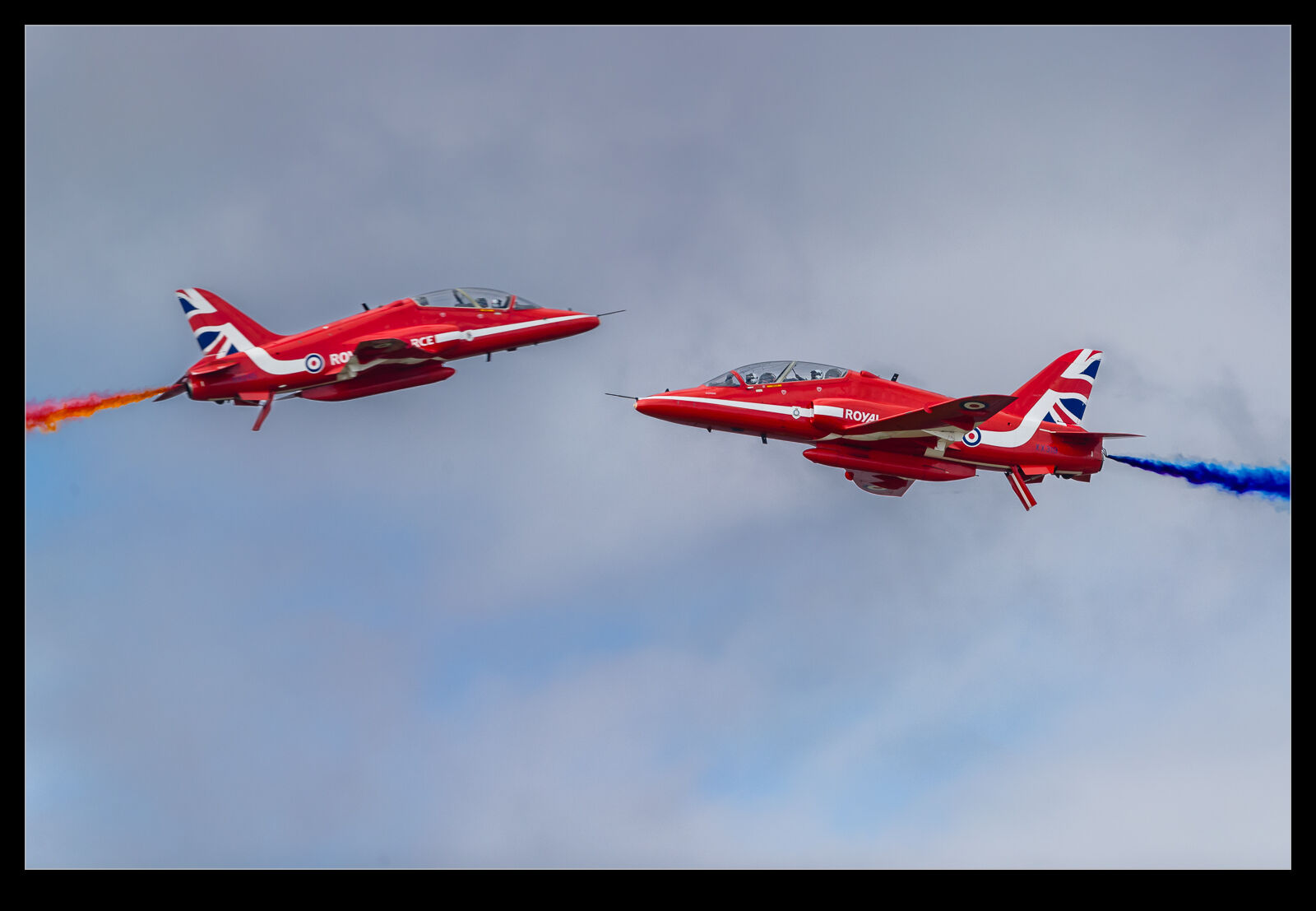 Consequently, I did make the effort to get a few good shots of their displays. It would have been nice to have some slightly better light to shoot them in, but that show was not the best for weather. Take off is always nice since you are close to the formations, and they are potentially tightly grouped in the frame. There are always the crossing shots to go for and then the bigger formation breaks will be a target. All of these were part of my efforts that year. When I was young, the rollbacks were a favorite of mine. They do a variation on this now, but I am not quite so keen. It is a tough one to shoot anyway since you really want to be on the display axis to get the best effect. Even so, I was still pretty happy with what I got overall.
Consequently, I did make the effort to get a few good shots of their displays. It would have been nice to have some slightly better light to shoot them in, but that show was not the best for weather. Take off is always nice since you are close to the formations, and they are potentially tightly grouped in the frame. There are always the crossing shots to go for and then the bigger formation breaks will be a target. All of these were part of my efforts that year. When I was young, the rollbacks were a favorite of mine. They do a variation on this now, but I am not quite so keen. It is a tough one to shoot anyway since you really want to be on the display axis to get the best effect. Even so, I was still pretty happy with what I got overall.
Kestrel on a Post
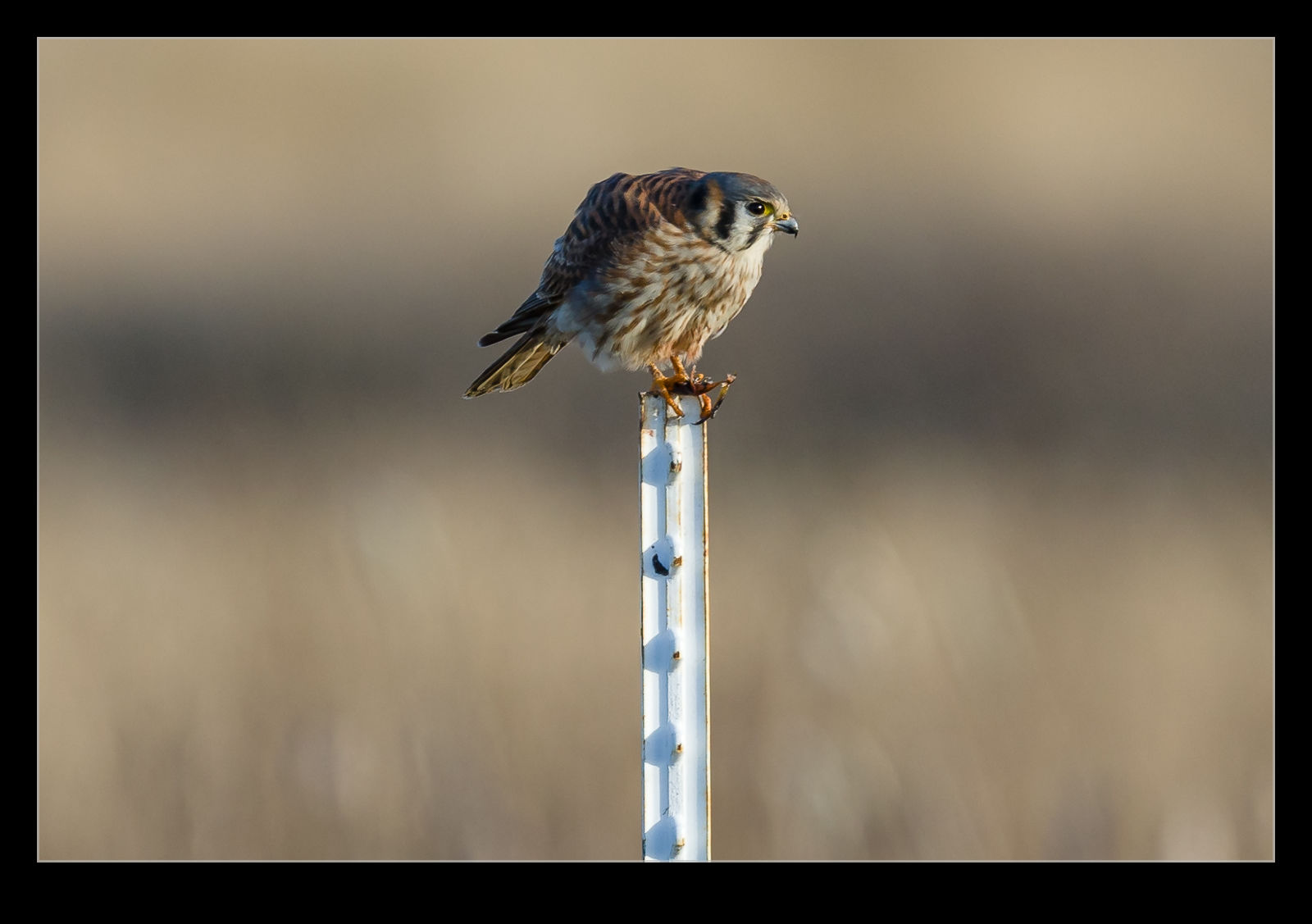 Kestrels are so small, getting a good shot of them is going to be tricky at the best of times and, unless they come nice and close, you are always working to see what you can get. This little fella landed on a post near the road and was clearly having a snack. Looking very closely at the images, I still can’t work out what it is eating. I then waited for it to fly away and, of course, once I put the camera down for a bit, off it went. I did get another shot of it as it flew to a post but nothing special.
Kestrels are so small, getting a good shot of them is going to be tricky at the best of times and, unless they come nice and close, you are always working to see what you can get. This little fella landed on a post near the road and was clearly having a snack. Looking very closely at the images, I still can’t work out what it is eating. I then waited for it to fly away and, of course, once I put the camera down for a bit, off it went. I did get another shot of it as it flew to a post but nothing special.
They Continue to Fly the Max10 But it Is Going to Be a While
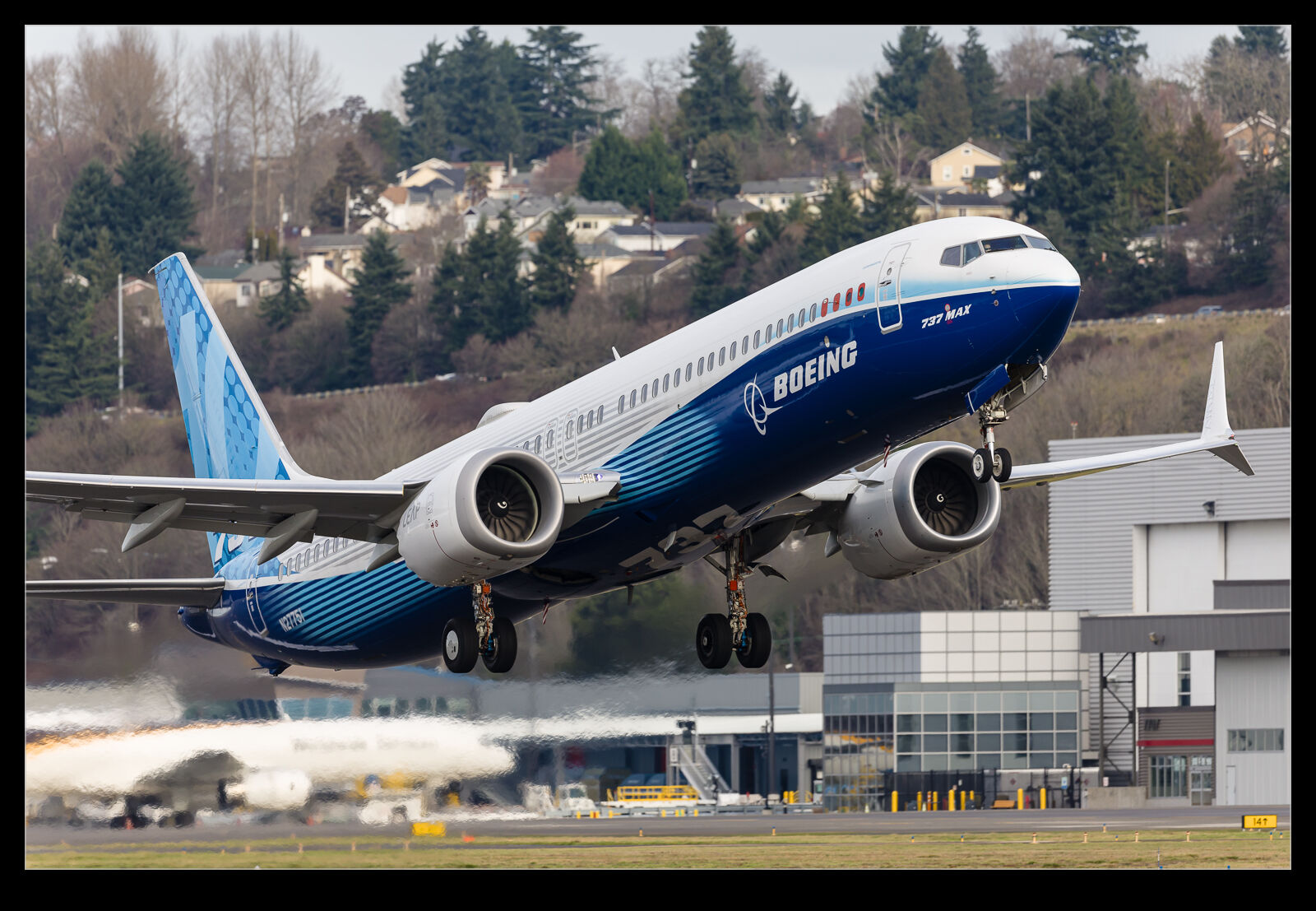 The 737 Max program continues to be a total bear for Boeing. As I write this, they are just recovering from the Max9 door plug incident. Prior to that, it was issues with rudder components not rigged properly and then it was rear bulkhead production issues. All of these follow on from the disaster that was MCAS. The Max7 and Max10 have both been flying for ages but still haven’t achieved certification. The Max7 was thought to be close, but it needed an exemption for inlet heating which Boeing had applied for. In the aftermath of the door plug incident, that exemption application has been withdrawn and now the Max 7 might be a year away from approval.
The 737 Max program continues to be a total bear for Boeing. As I write this, they are just recovering from the Max9 door plug incident. Prior to that, it was issues with rudder components not rigged properly and then it was rear bulkhead production issues. All of these follow on from the disaster that was MCAS. The Max7 and Max10 have both been flying for ages but still haven’t achieved certification. The Max7 was thought to be close, but it needed an exemption for inlet heating which Boeing had applied for. In the aftermath of the door plug incident, that exemption application has been withdrawn and now the Max 7 might be a year away from approval.
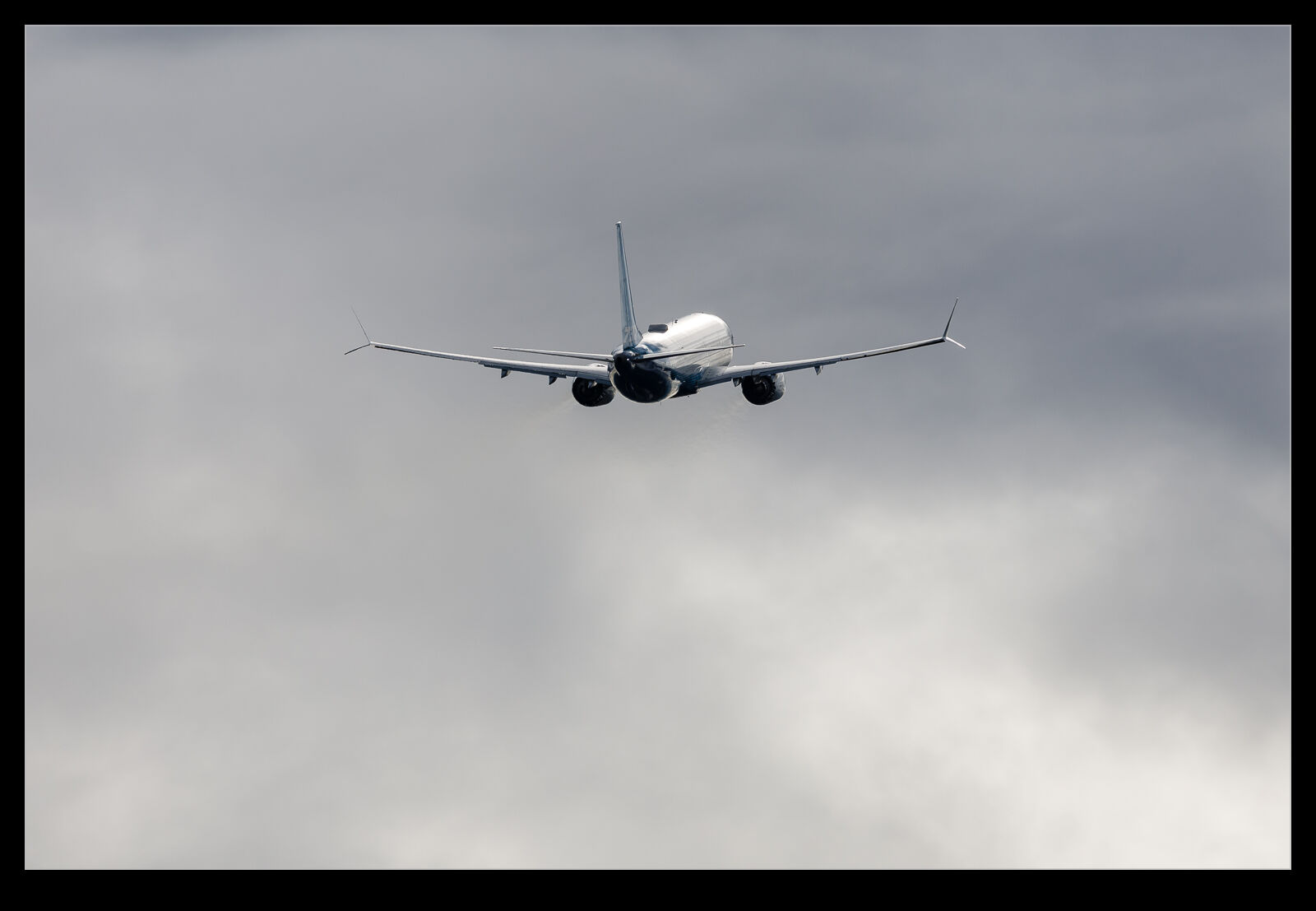 The Max10 is behind the Max7 so it is possible that it might get approval by 2025 but, at this point, who knows when it will actually be. Meanwhile, there is still testing underway. The first Max 10 jet is active at the moment undertaking testing work. It was due out from Boeing Field on another test heading off to Texas. I figured it would run a little longer given that it would be heavier so chose my spot for the shots. However, I did still use a longer lens to get a tighter shot for rotation. The light came out nicely as they rolled and the rotation was ideal for where I was. It is going to be a while before I see these in service but at least I get to see them on test periodically.
The Max10 is behind the Max7 so it is possible that it might get approval by 2025 but, at this point, who knows when it will actually be. Meanwhile, there is still testing underway. The first Max 10 jet is active at the moment undertaking testing work. It was due out from Boeing Field on another test heading off to Texas. I figured it would run a little longer given that it would be heavier so chose my spot for the shots. However, I did still use a longer lens to get a tighter shot for rotation. The light came out nicely as they rolled and the rotation was ideal for where I was. It is going to be a while before I see these in service but at least I get to see them on test periodically.
The Sky Over a Gas Station
The Marines Show Up
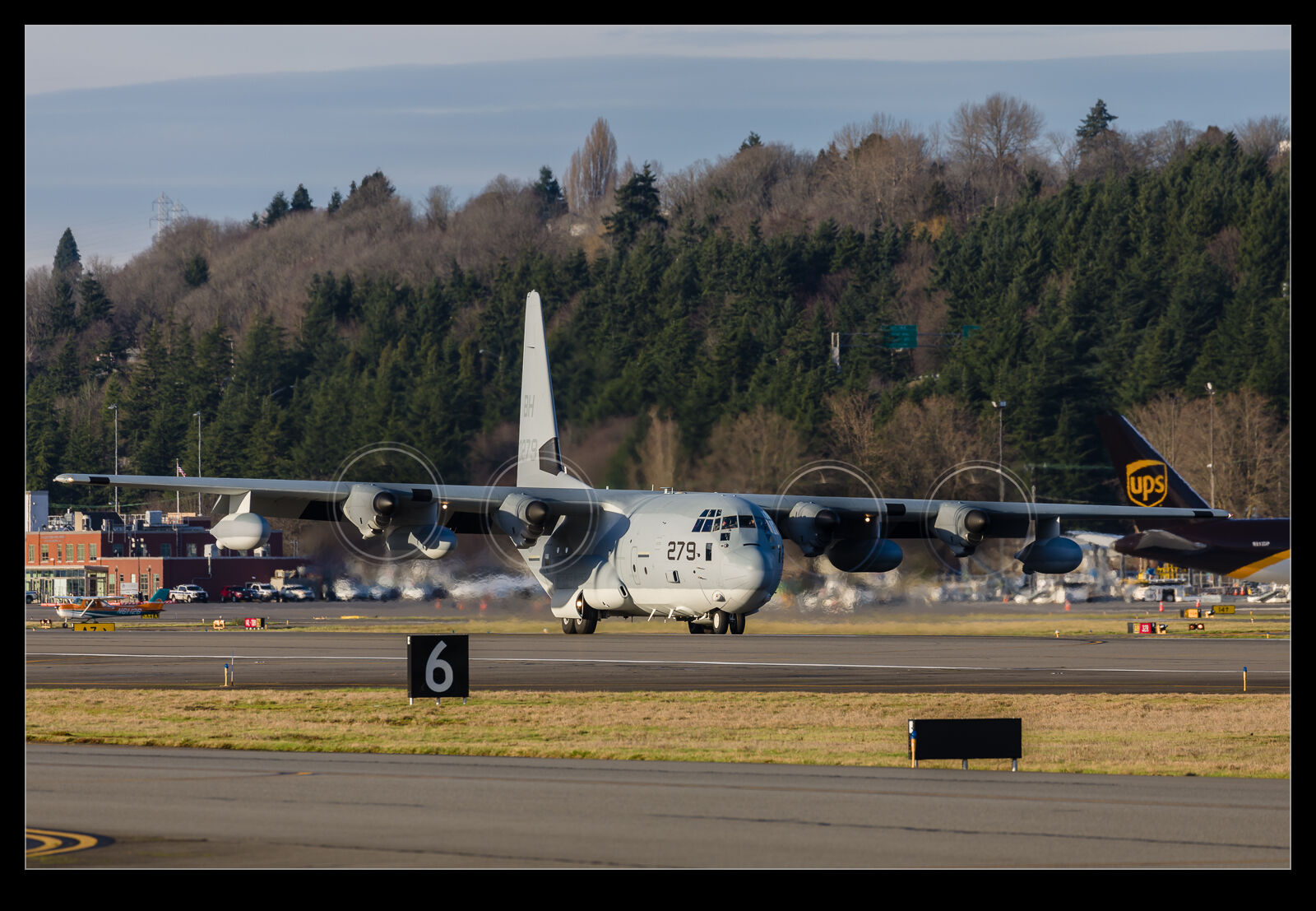 I could easily have missed this, but my friend messaged me that a Herc was coming in. I was working on some other stuff and would have been unaware until too late. It was not where I was, and I wasn’t moving but the roll out and taxiing back was in lovely light so I wasn’t missing out. They taxied to the terminal and kept the engines running so I wondered if they were going straight back out but it wasn’t to be. They then taxied to a parking spot and shut down. Maybe they were clearing customs? Apparently they stayed for the night but were gone when I came by the following day.
I could easily have missed this, but my friend messaged me that a Herc was coming in. I was working on some other stuff and would have been unaware until too late. It was not where I was, and I wasn’t moving but the roll out and taxiing back was in lovely light so I wasn’t missing out. They taxied to the terminal and kept the engines running so I wondered if they were going straight back out but it wasn’t to be. They then taxied to a parking spot and shut down. Maybe they were clearing customs? Apparently they stayed for the night but were gone when I came by the following day.
Did These Geese Get Cleared Through the Zone?
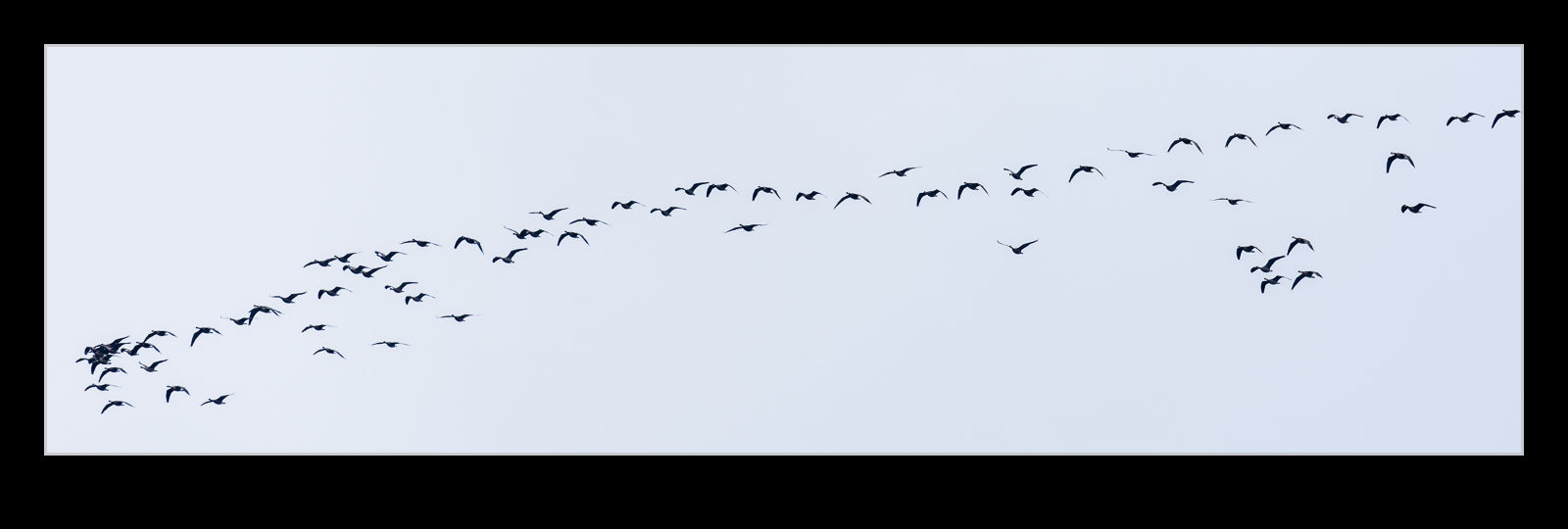 This big flock of geese flew right by Boeing Field one afternoon. There were tons of them, and their route brought them right across the approach path before skirting to one side of the airfield. I didn’t hear them talking to air traffic and I don’t believe they had a clearance. Maybe they will get a visit from the FAA at some point!
This big flock of geese flew right by Boeing Field one afternoon. There were tons of them, and their route brought them right across the approach path before skirting to one side of the airfield. I didn’t hear them talking to air traffic and I don’t believe they had a clearance. Maybe they will get a visit from the FAA at some point!
How Long Can a Falcon 50 Remain in Reverse?
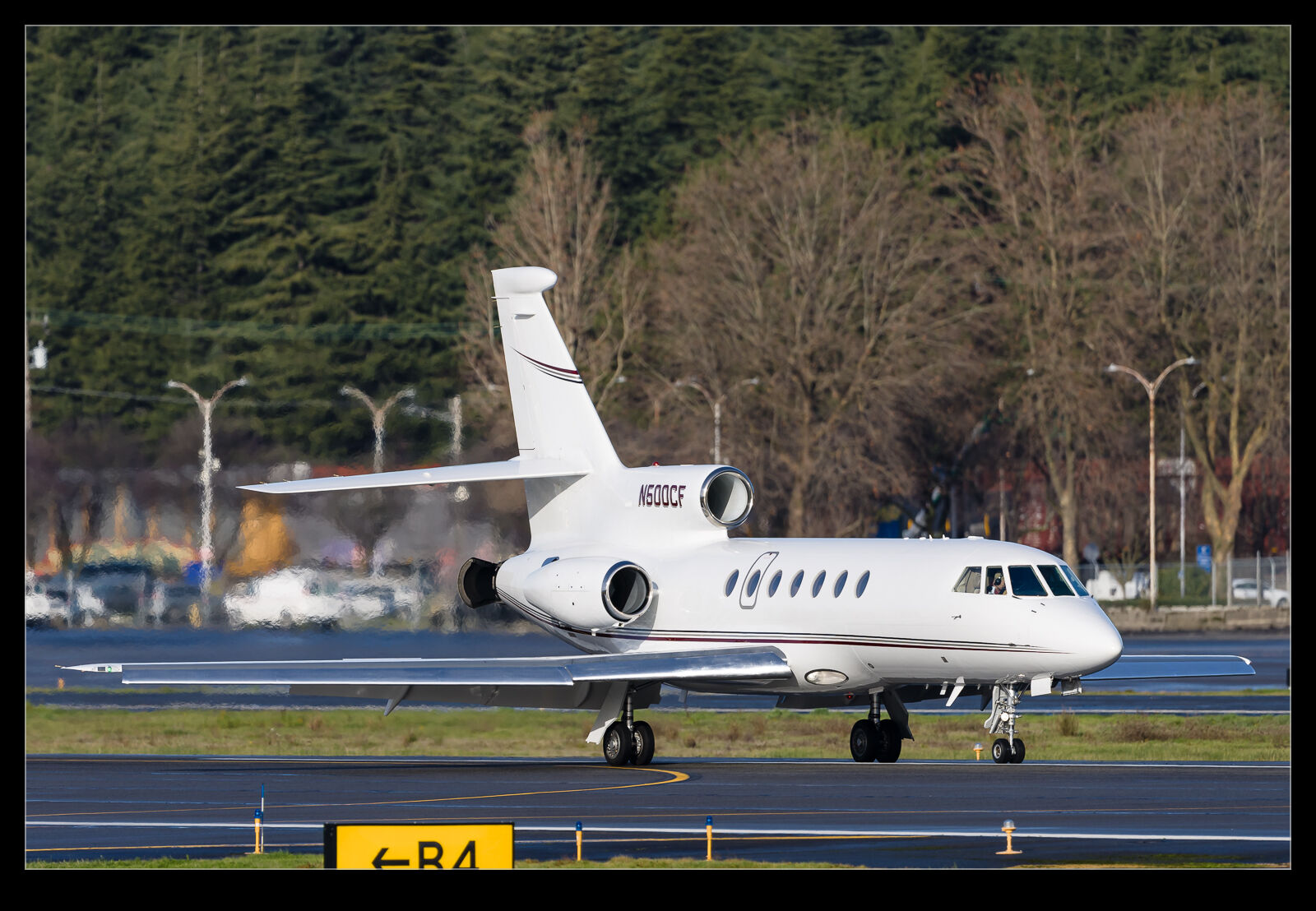 The Falcon 50 only has a single thrust reverser, and it is fitted to the centerline engine. The nacelles on each side are not fitted with reversers. I was quite a way down the runway from this Falcon when it landed, and I could hear the reverser kick in. I was not expecting it to stay in reverse for very long, but they kept it in all the way through the roll out and even as they exited to the taxiway. Is that normal procedure?
The Falcon 50 only has a single thrust reverser, and it is fitted to the centerline engine. The nacelles on each side are not fitted with reversers. I was quite a way down the runway from this Falcon when it landed, and I could hear the reverser kick in. I was not expecting it to stay in reverse for very long, but they kept it in all the way through the roll out and even as they exited to the taxiway. Is that normal procedure?
